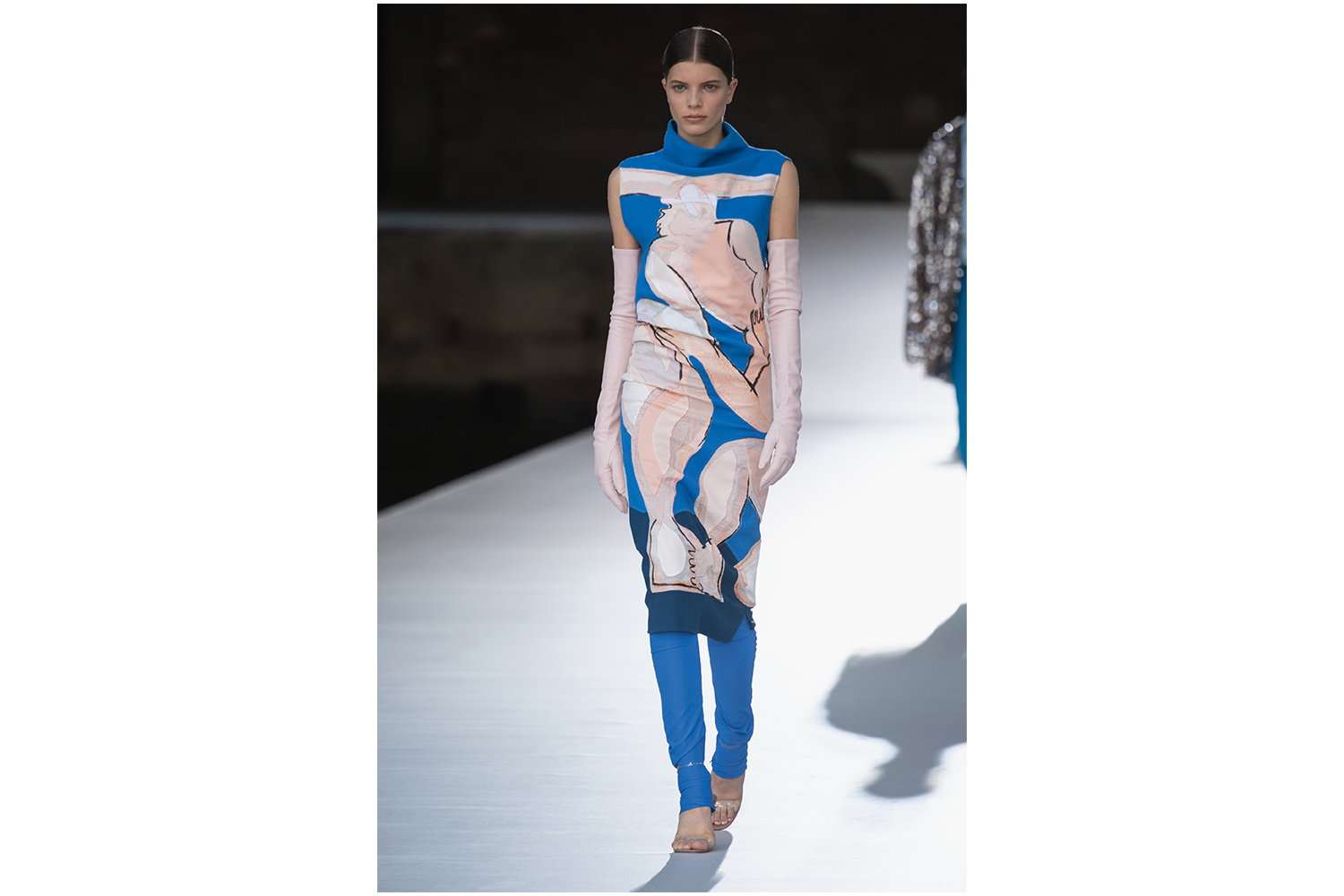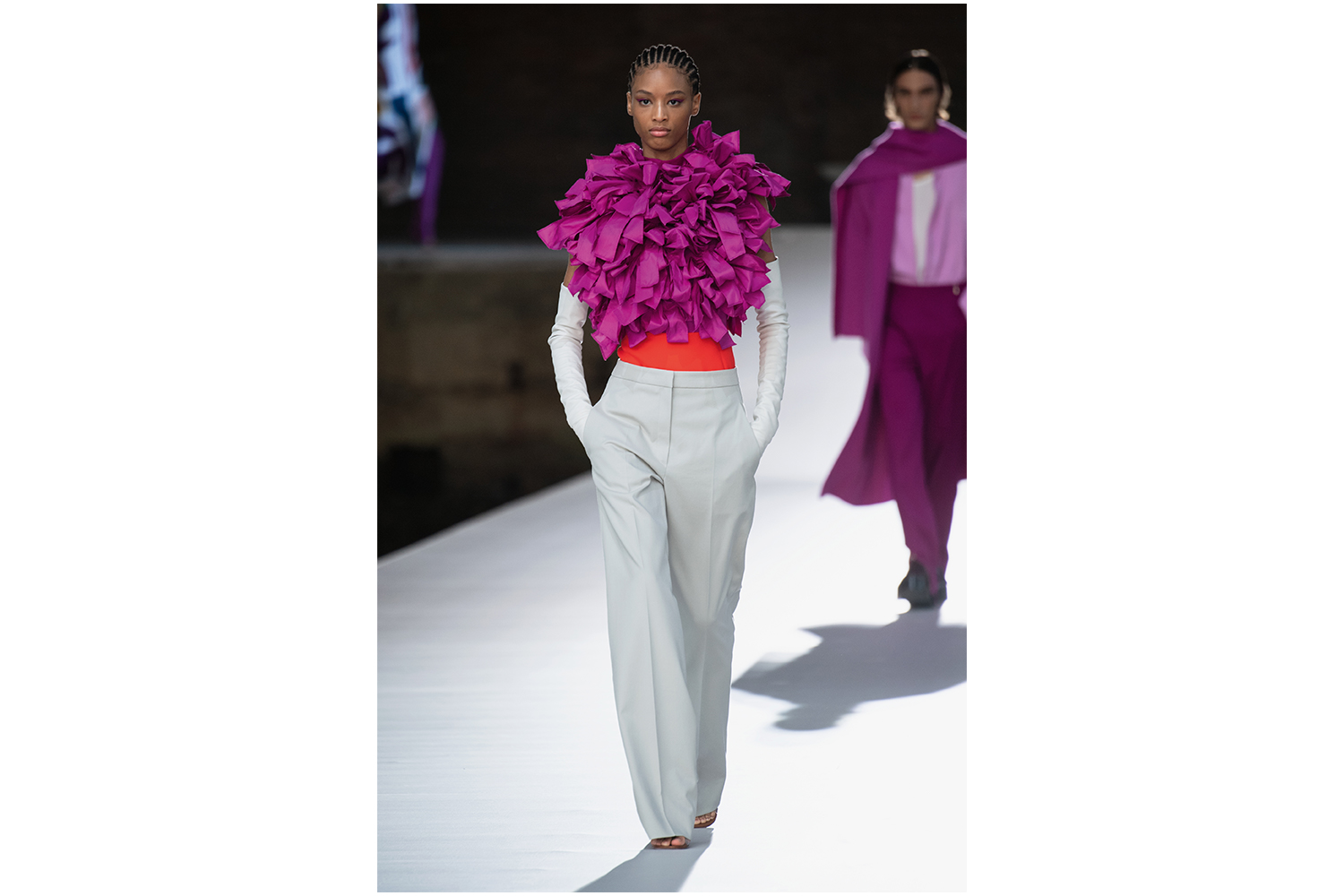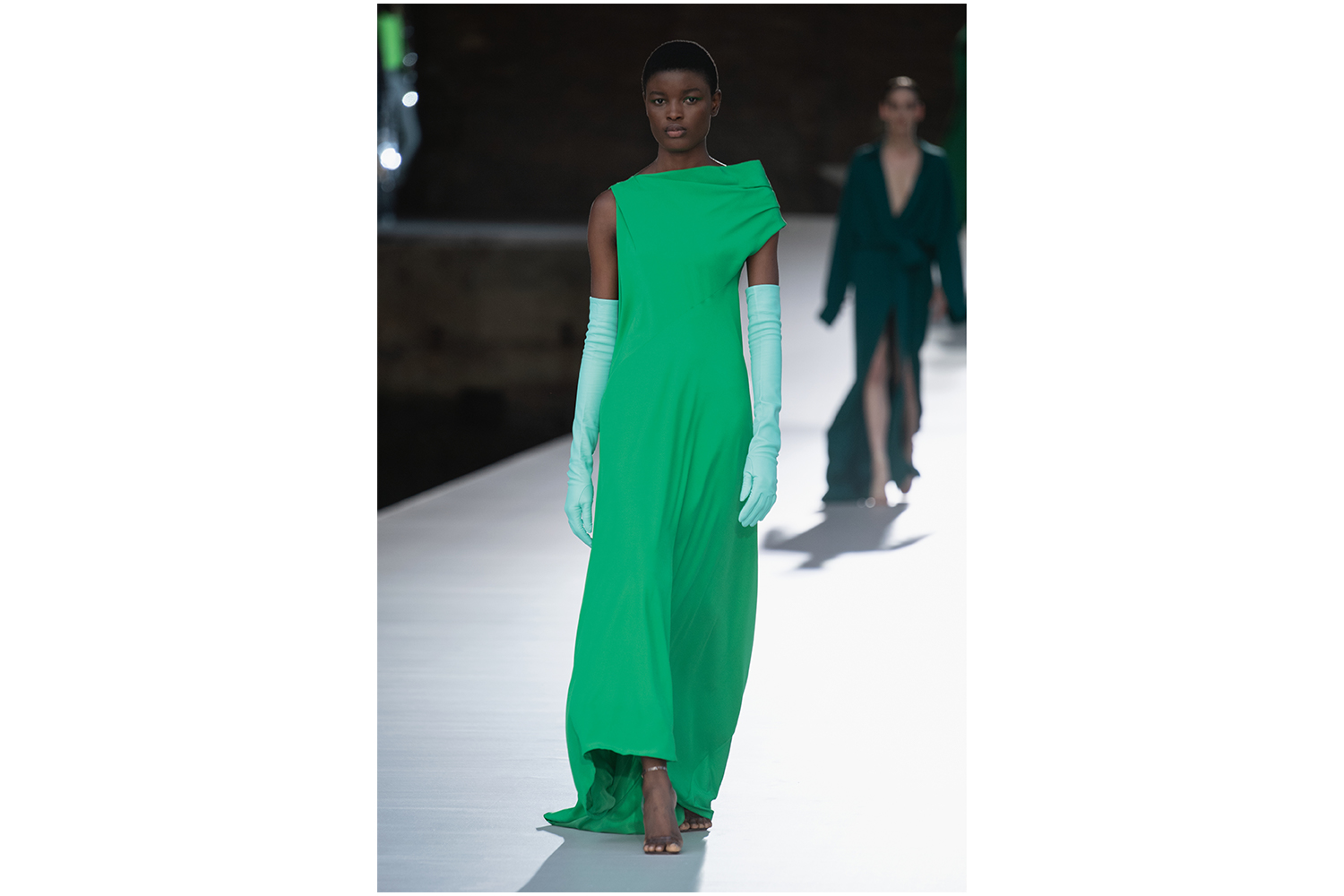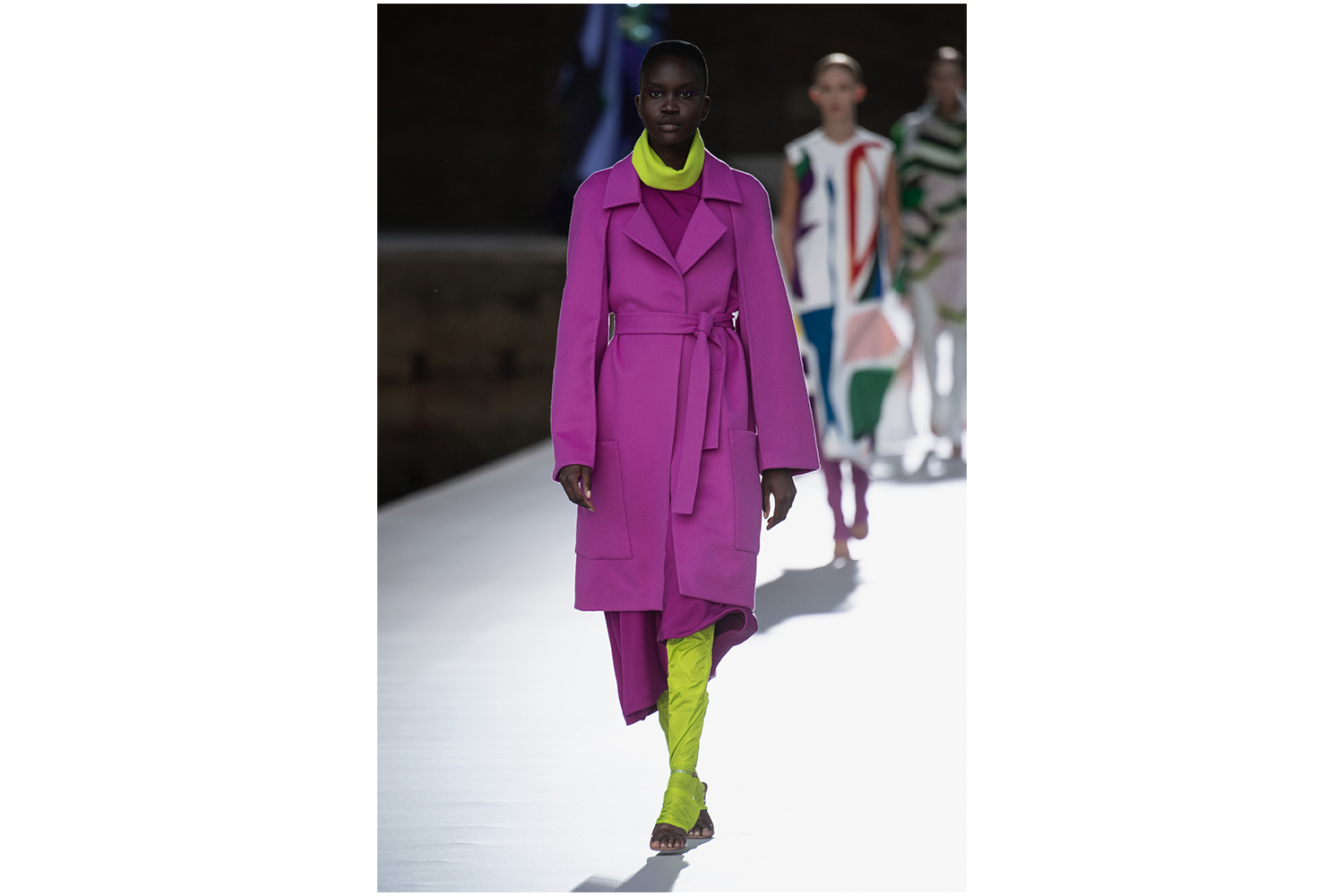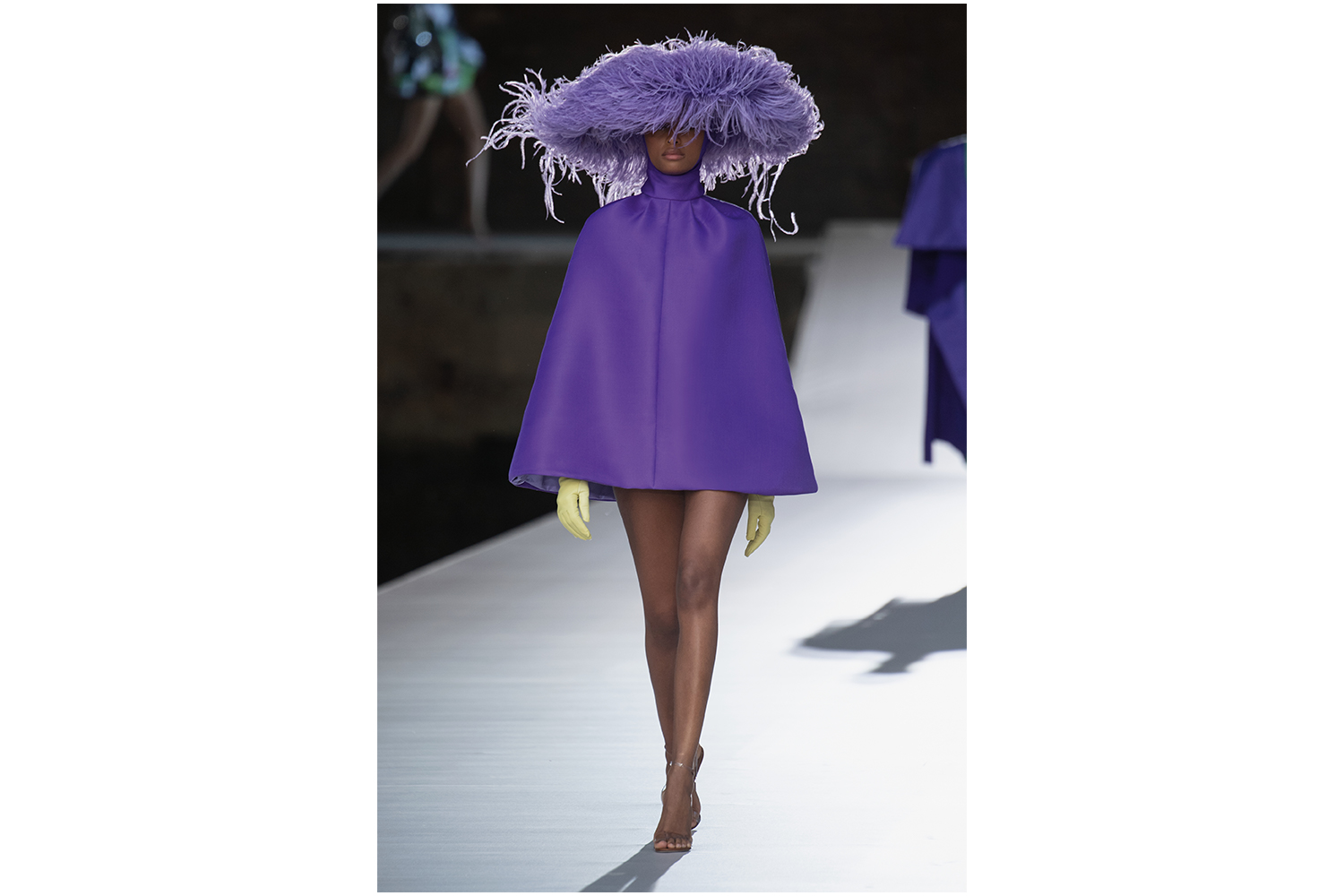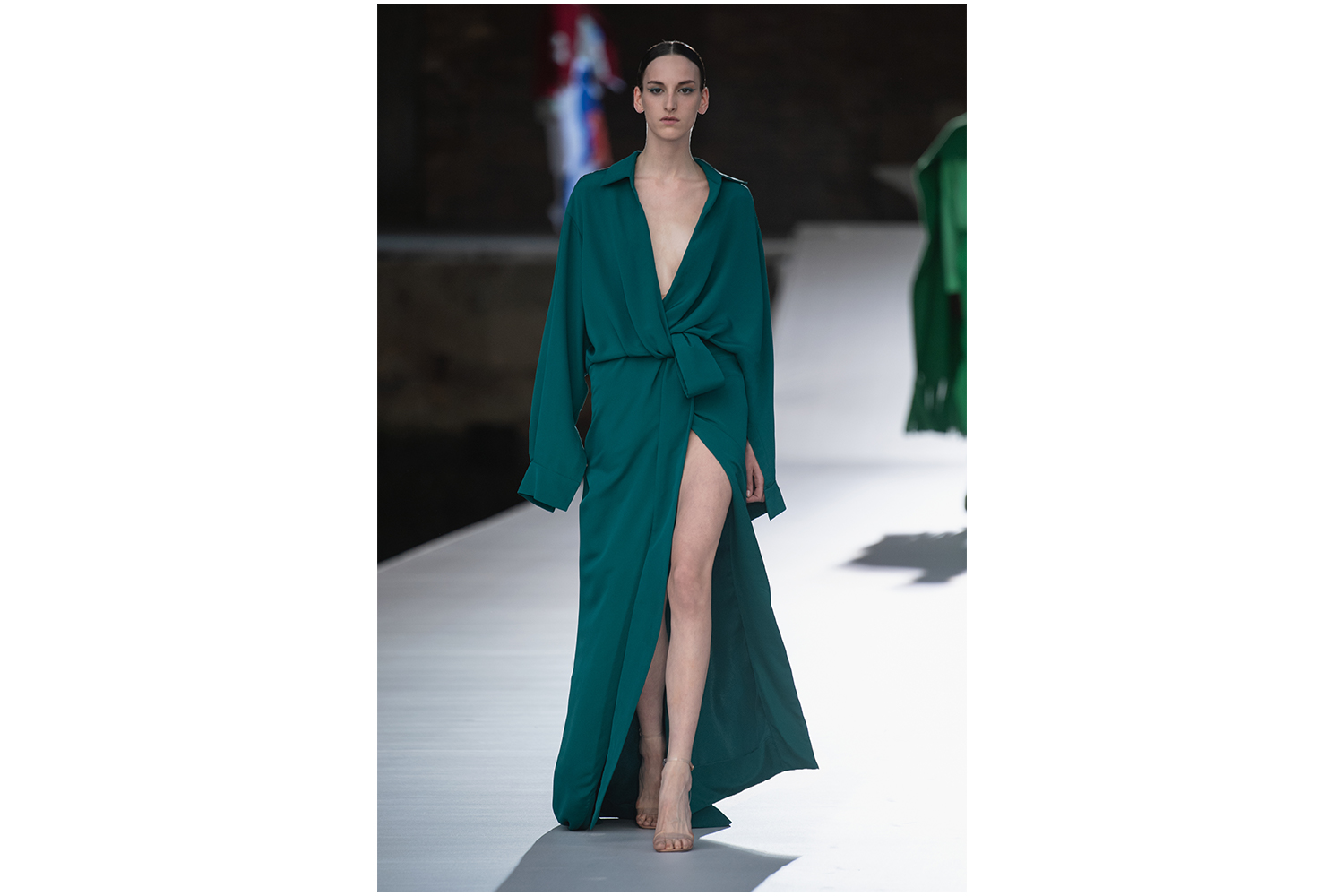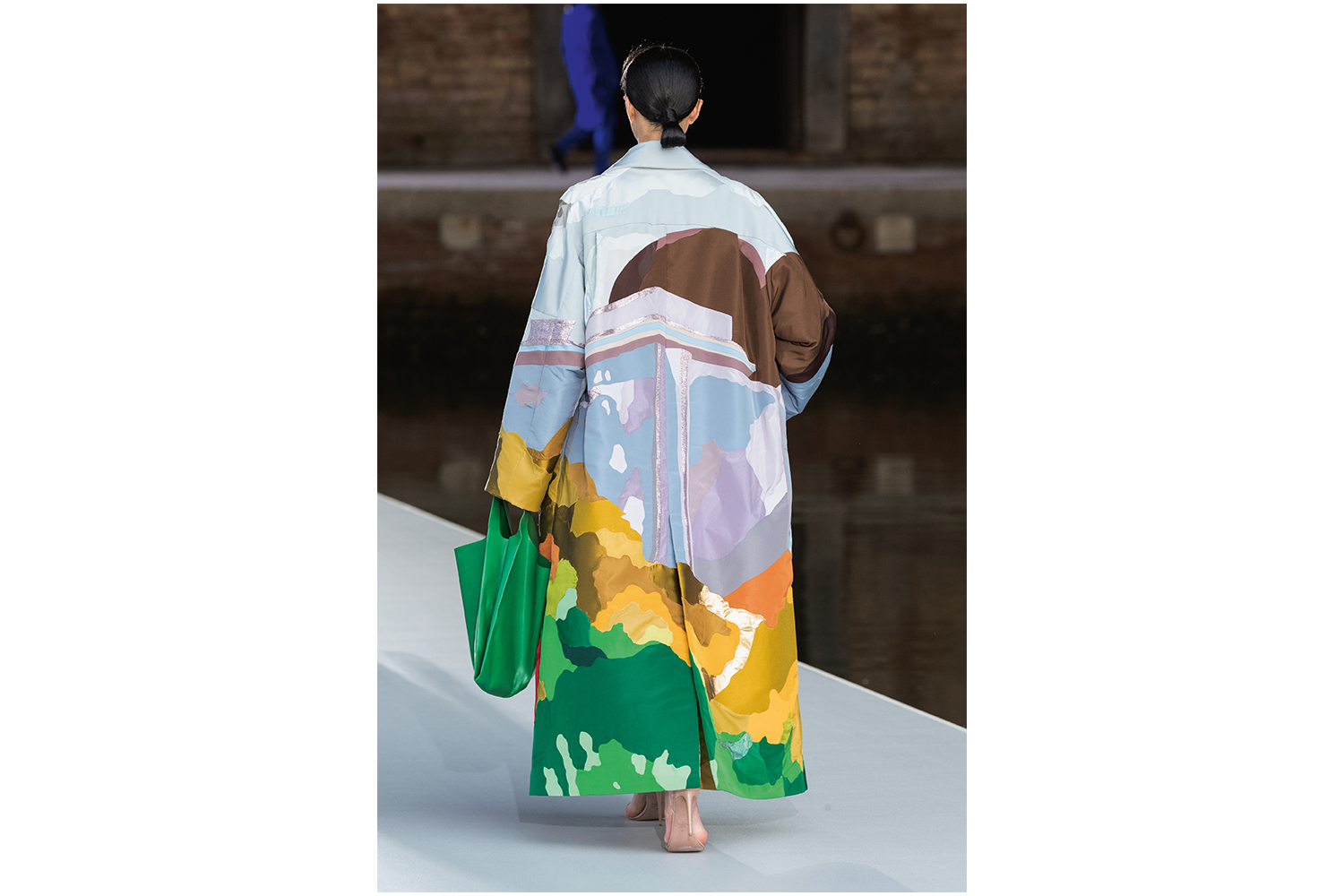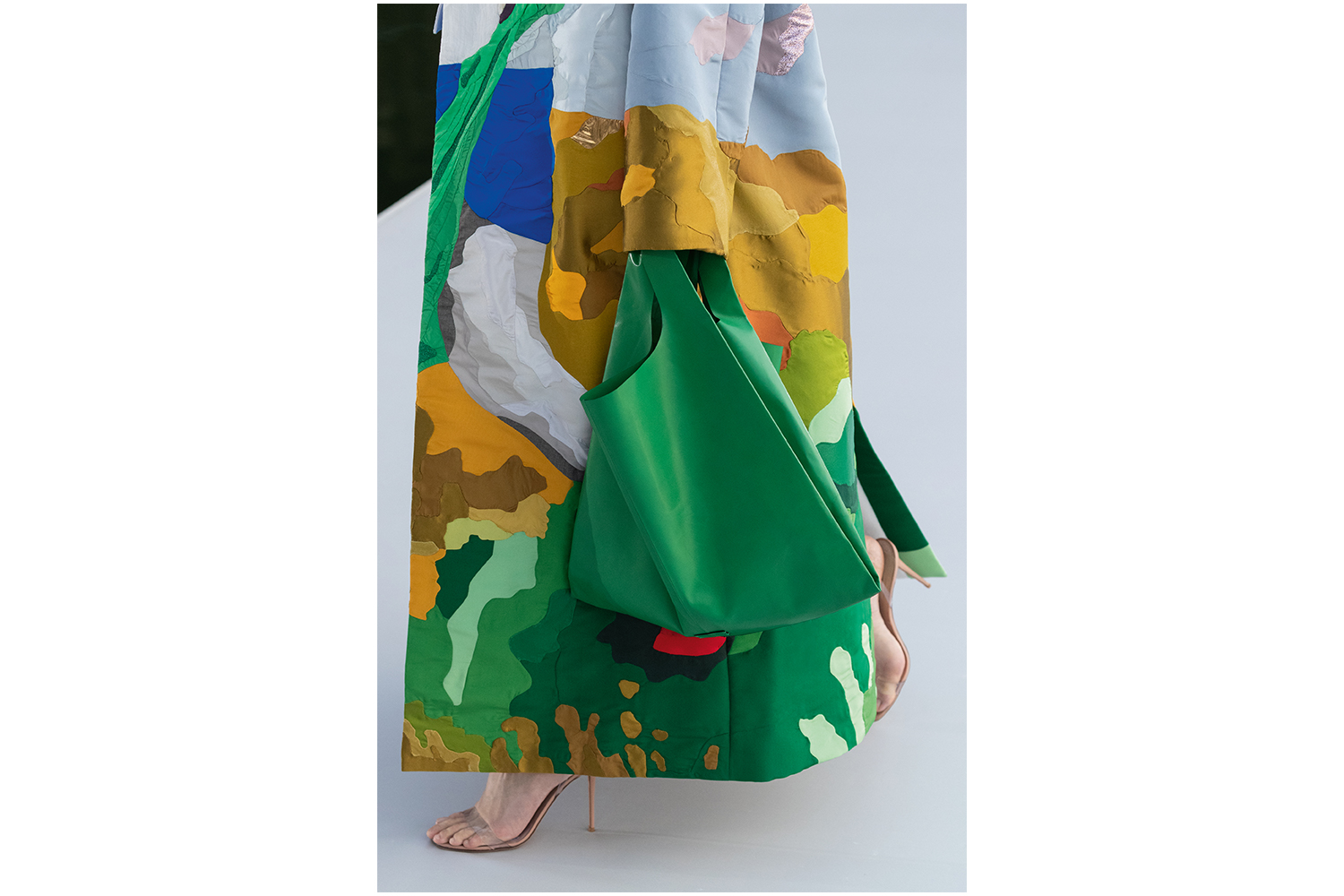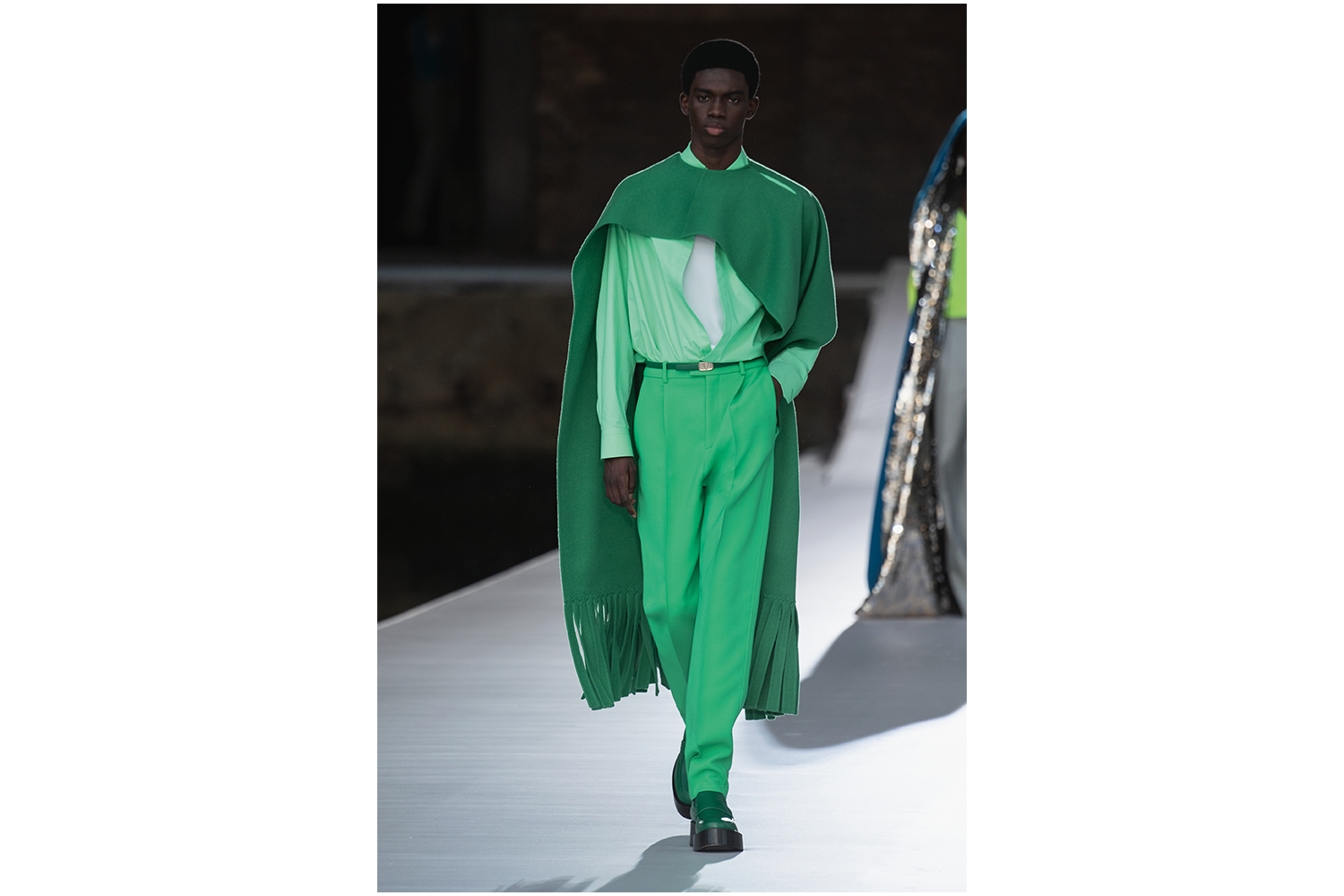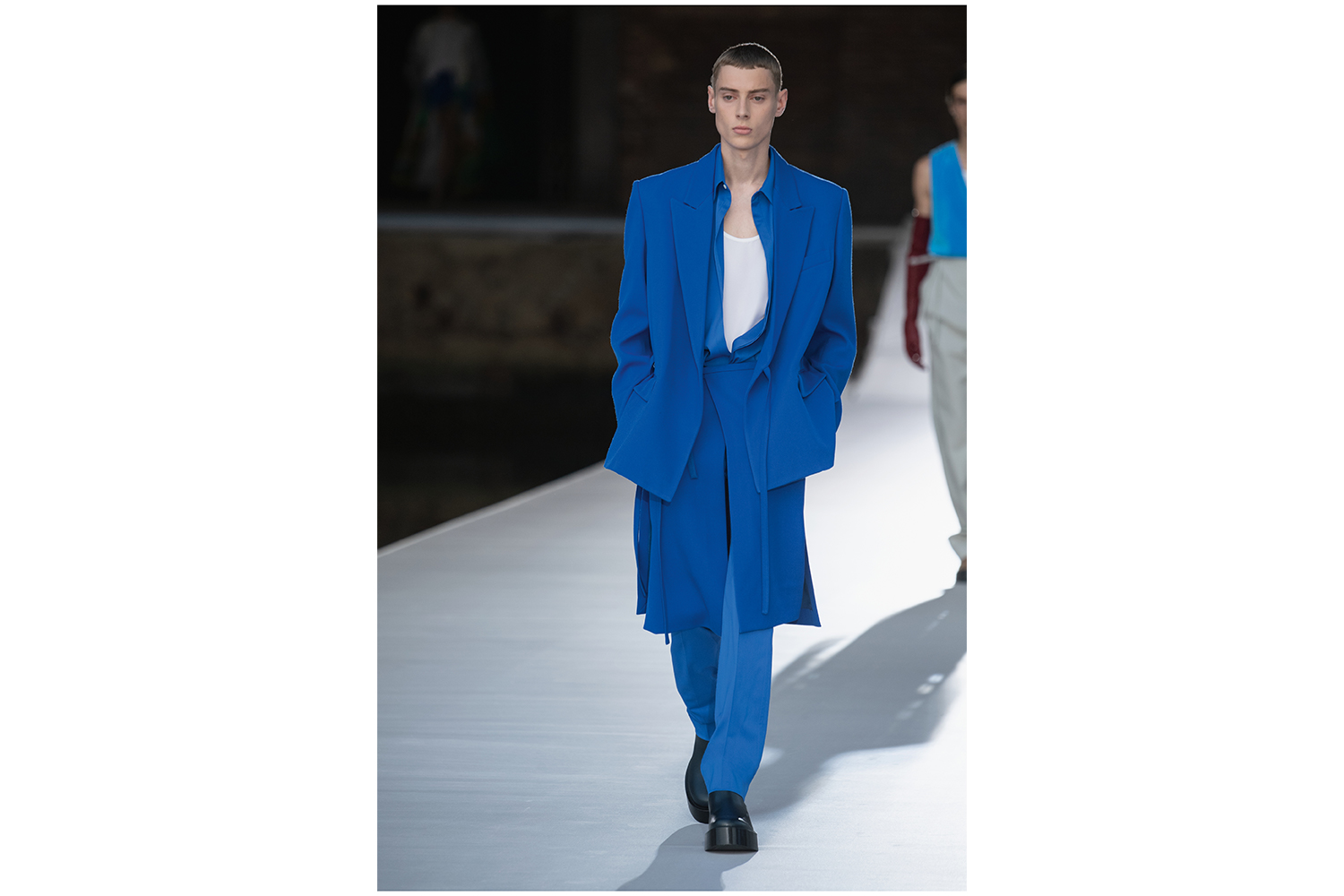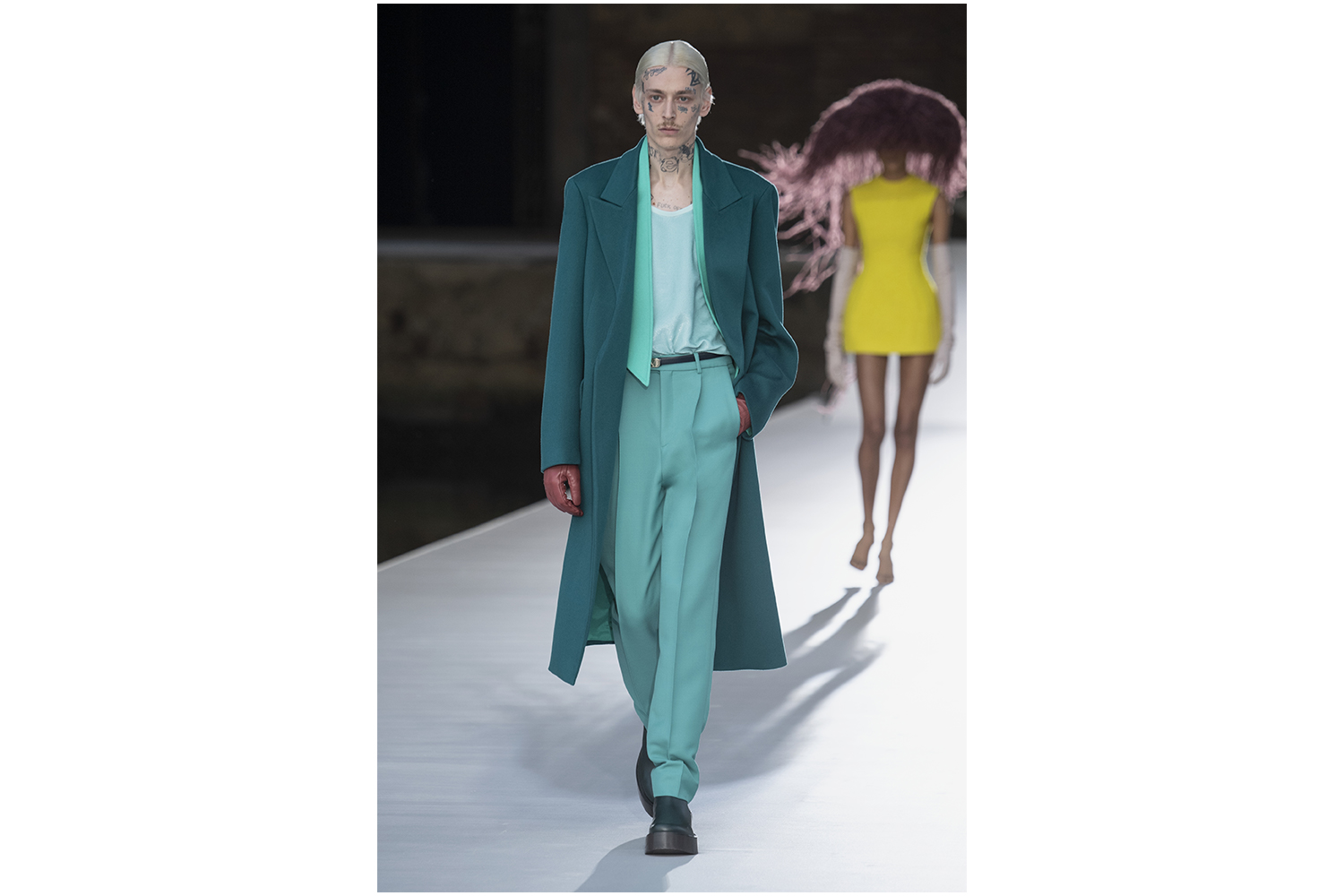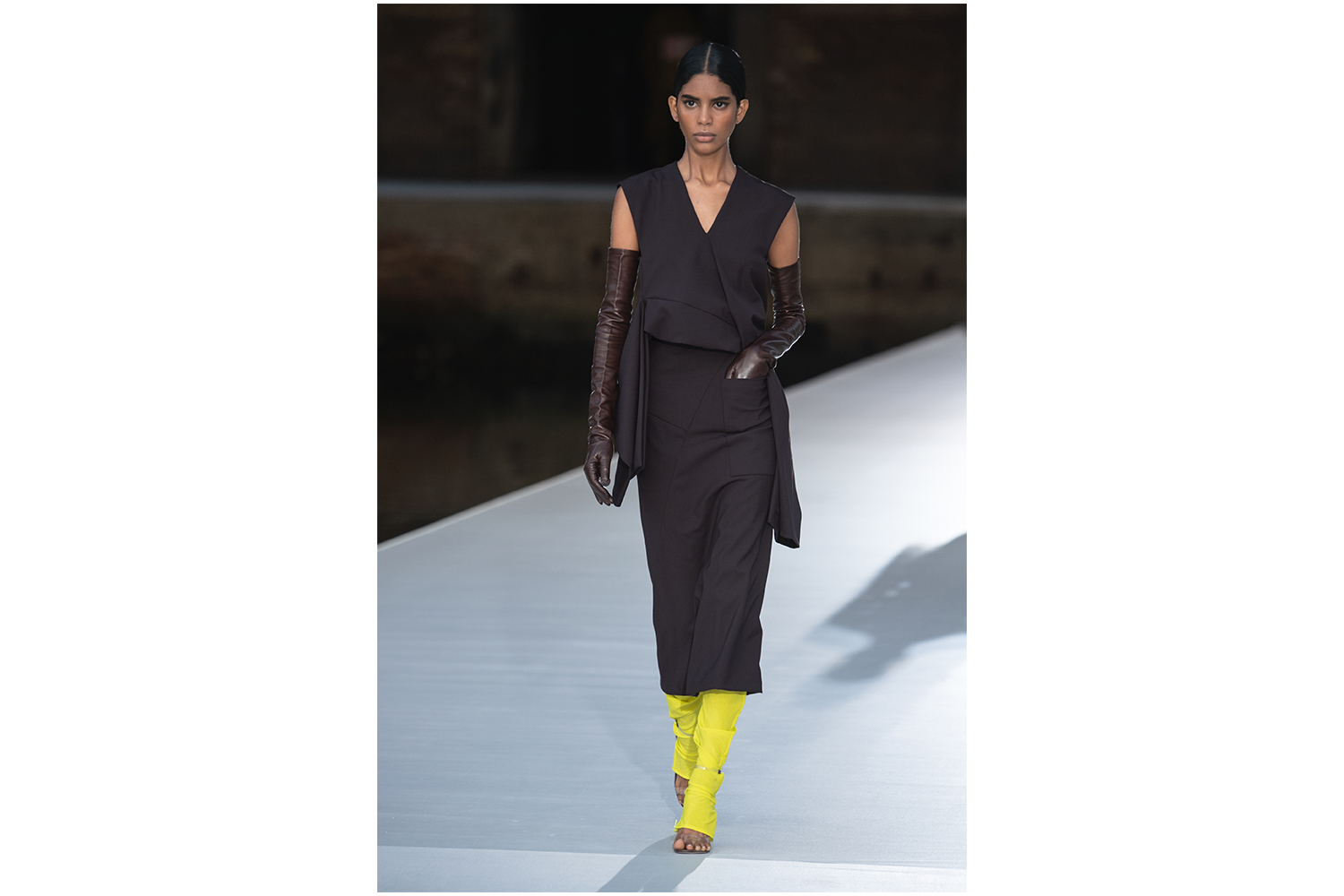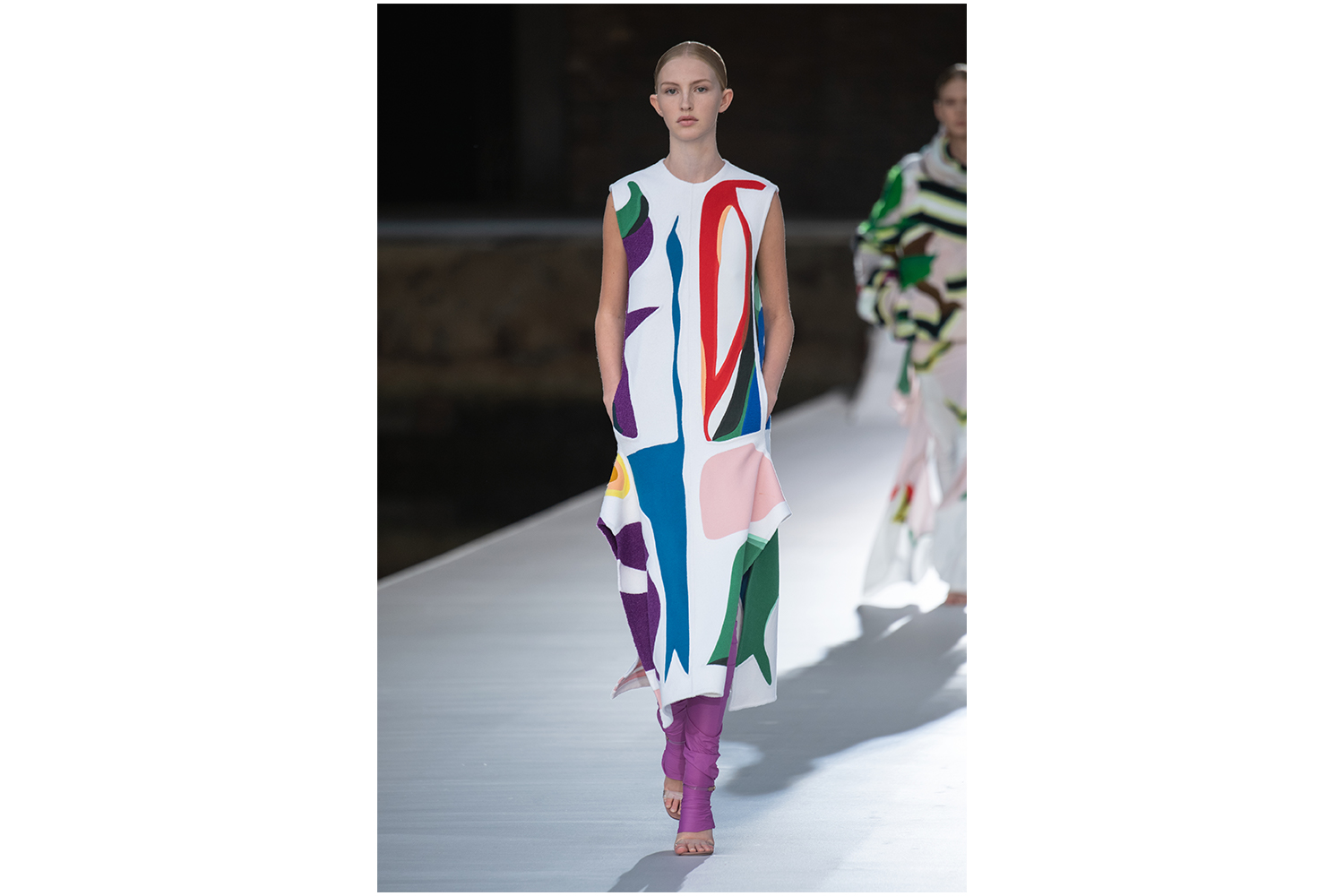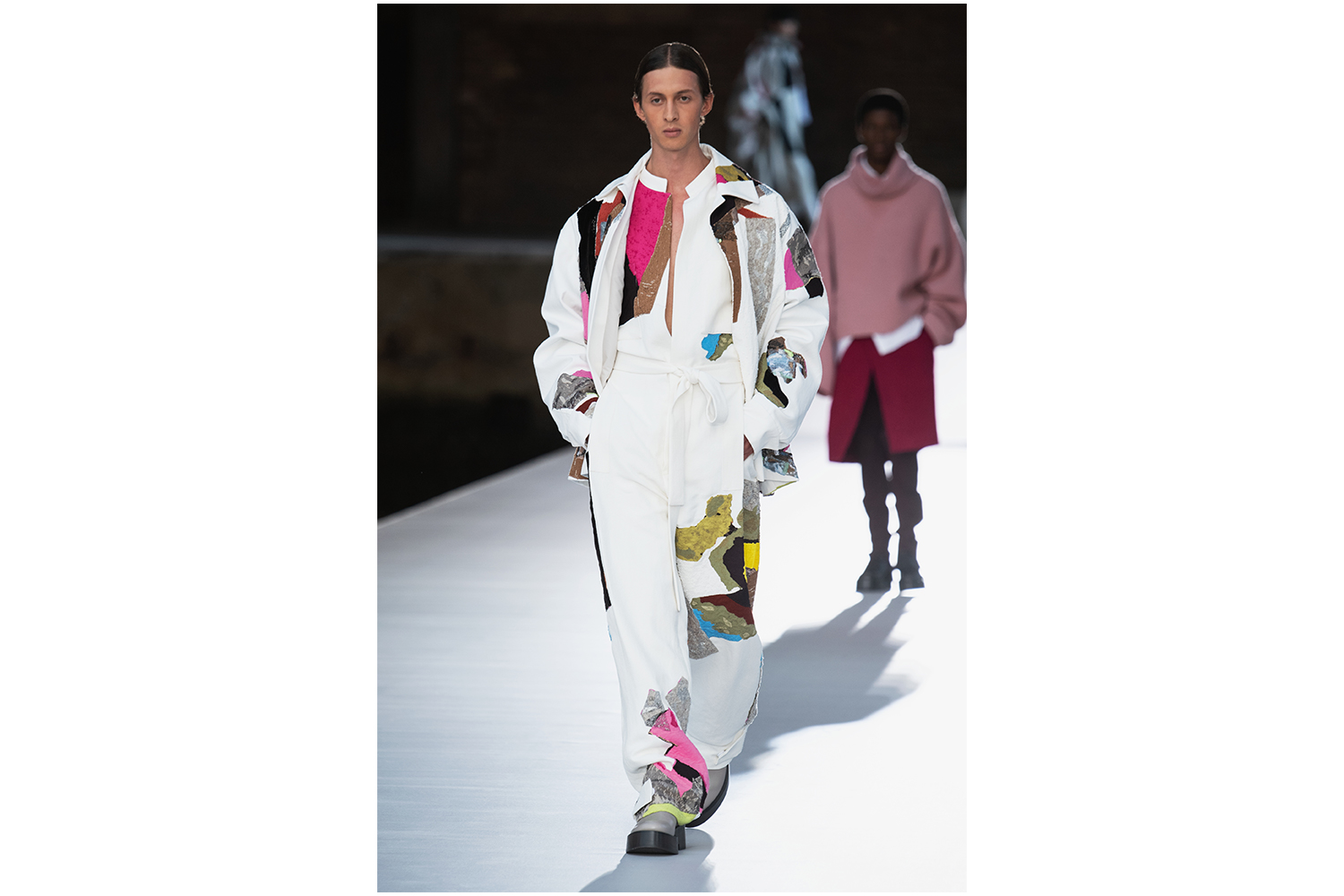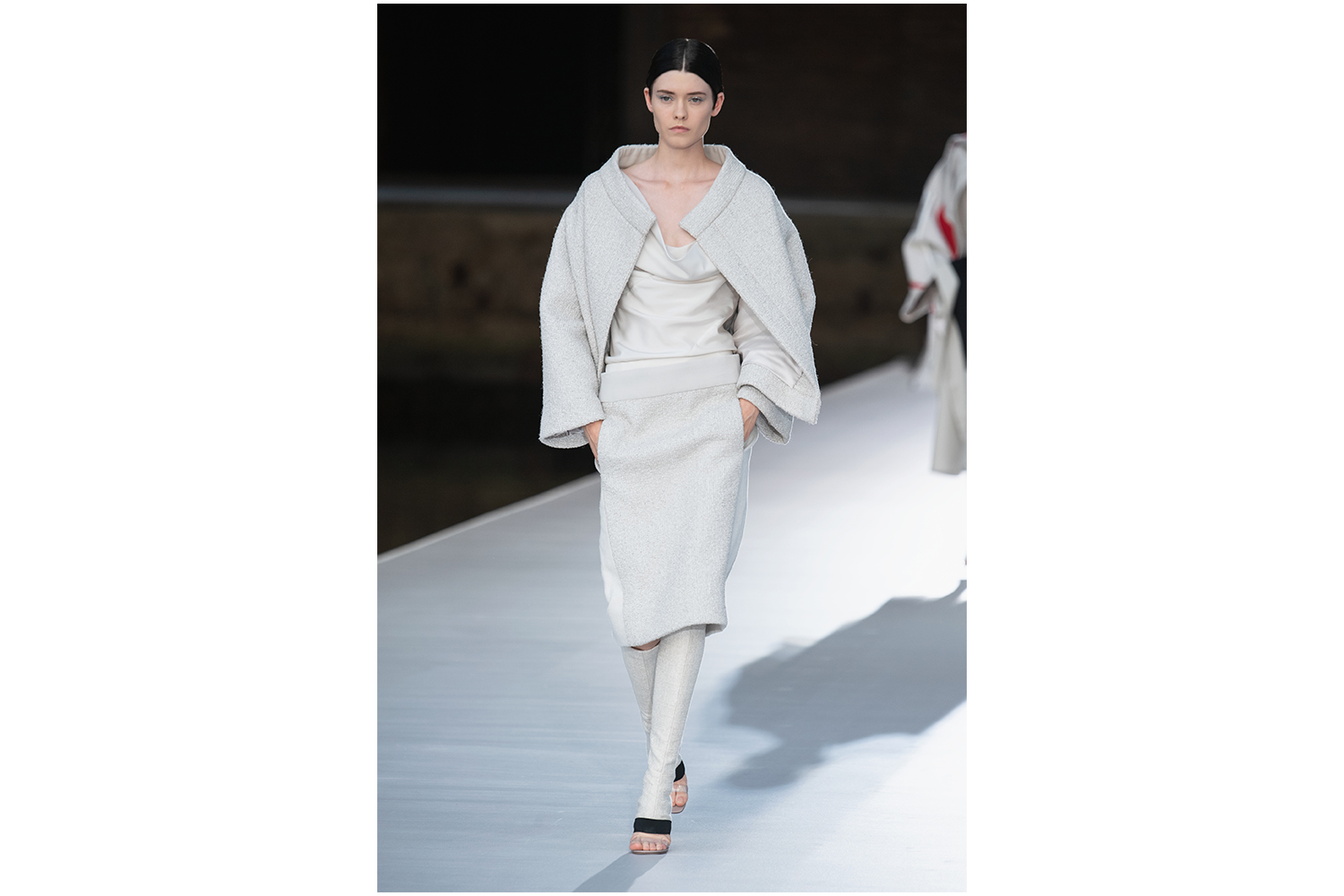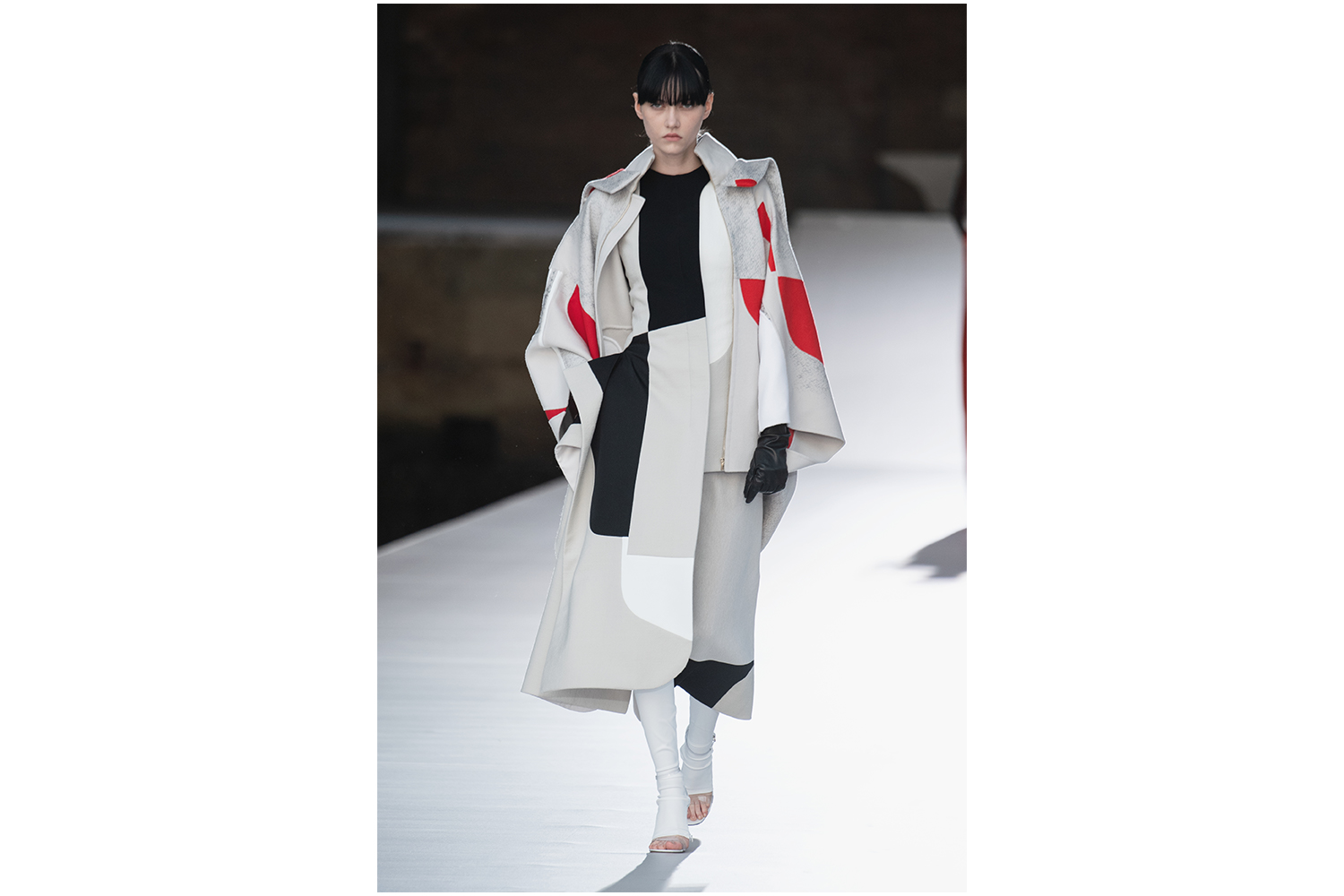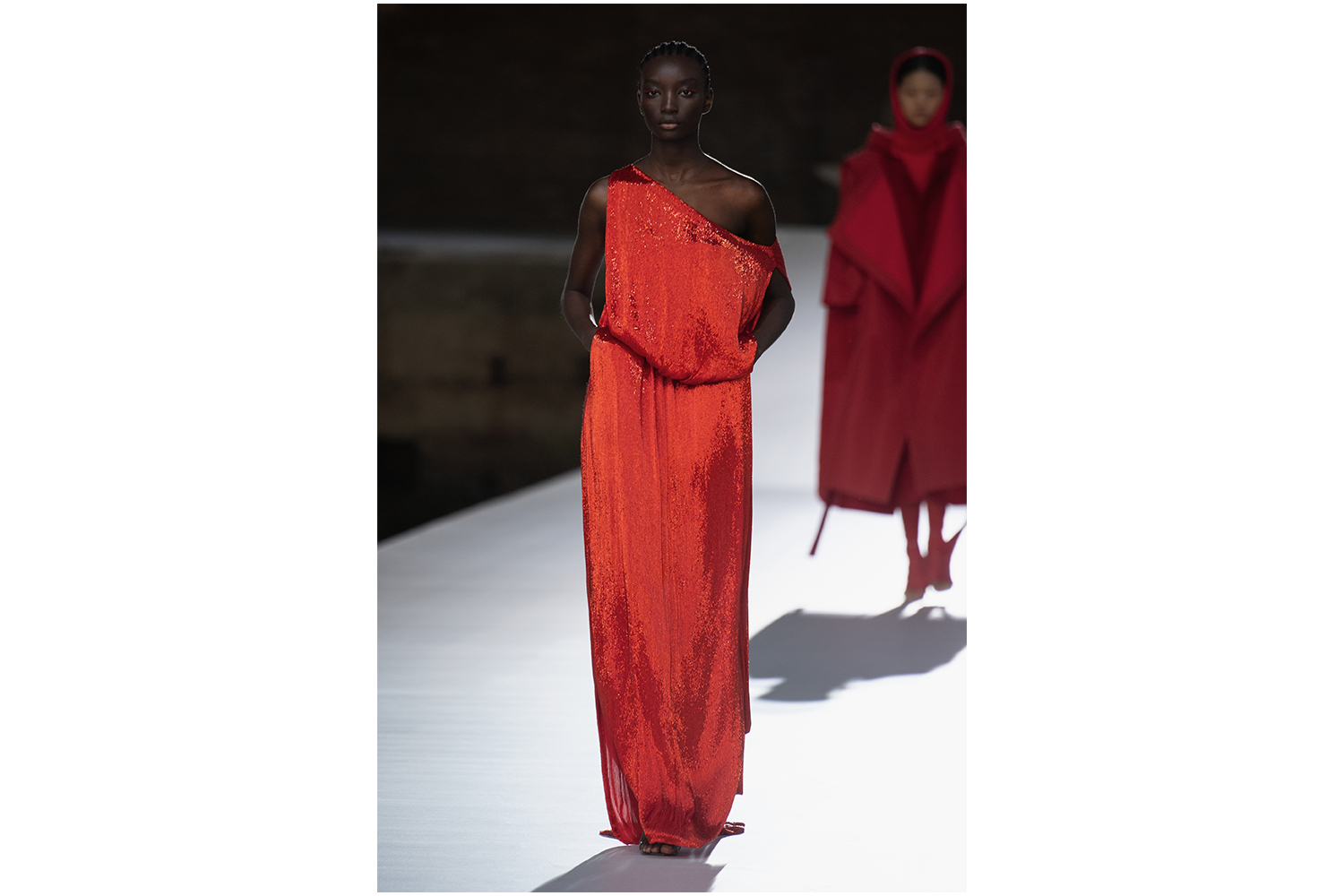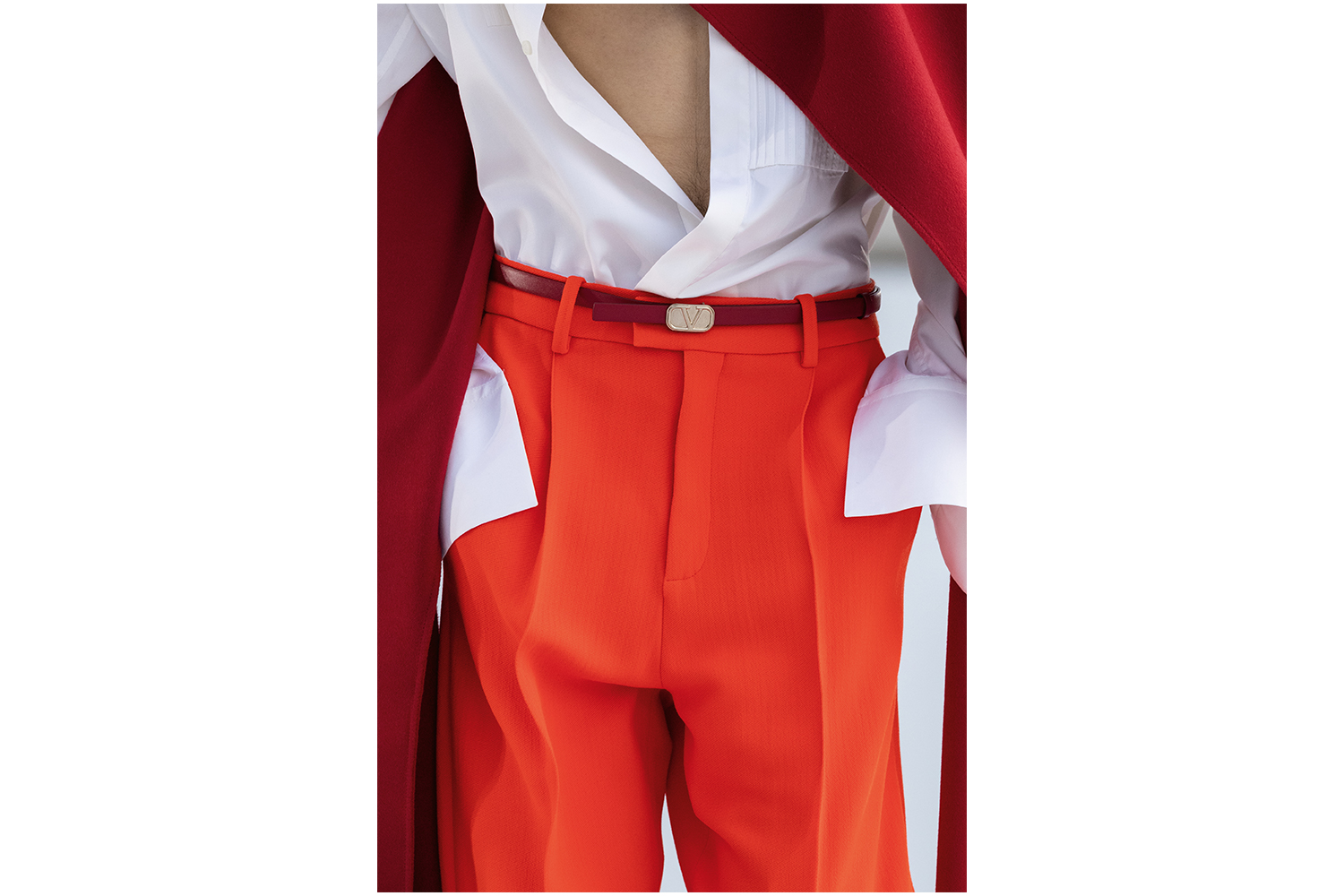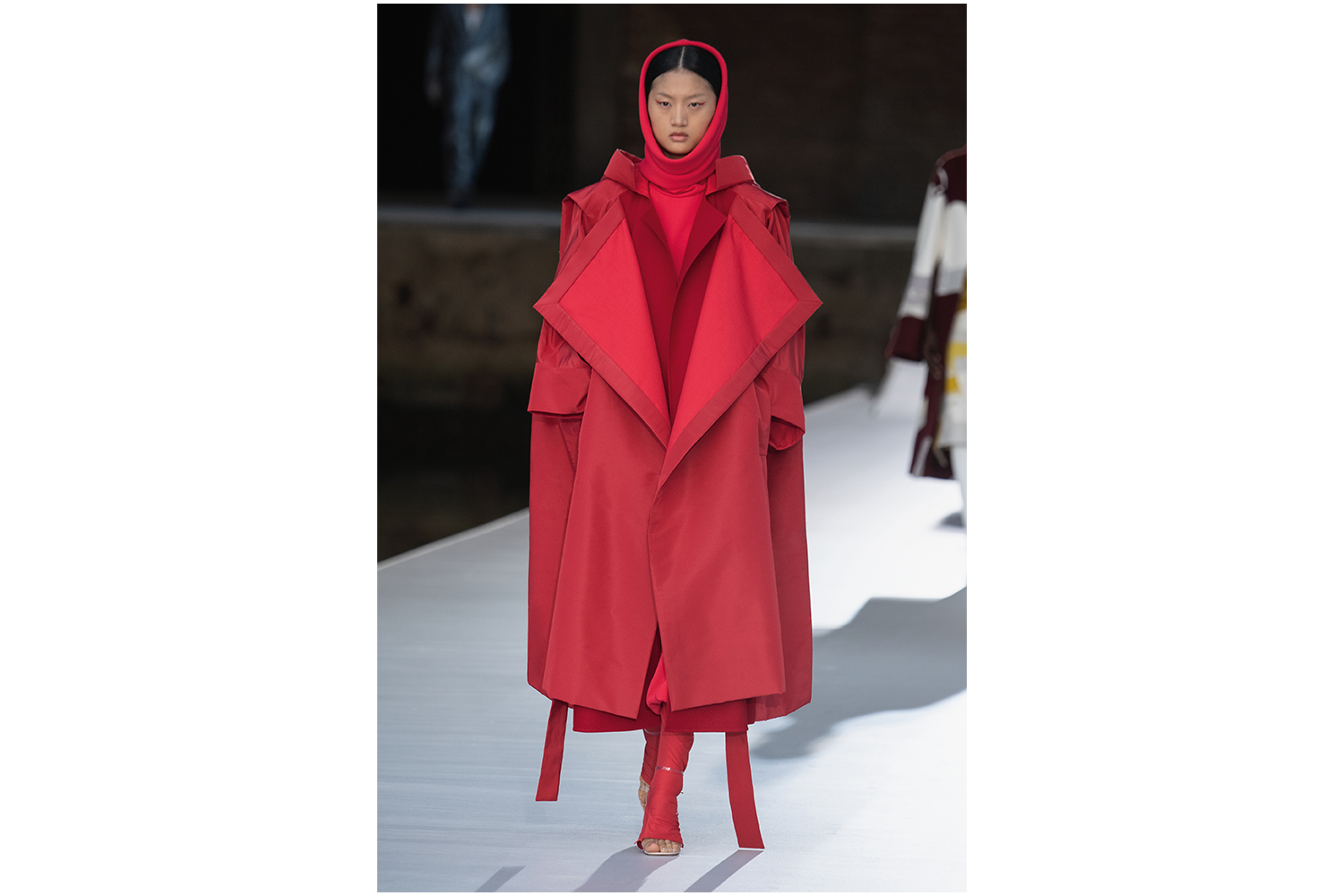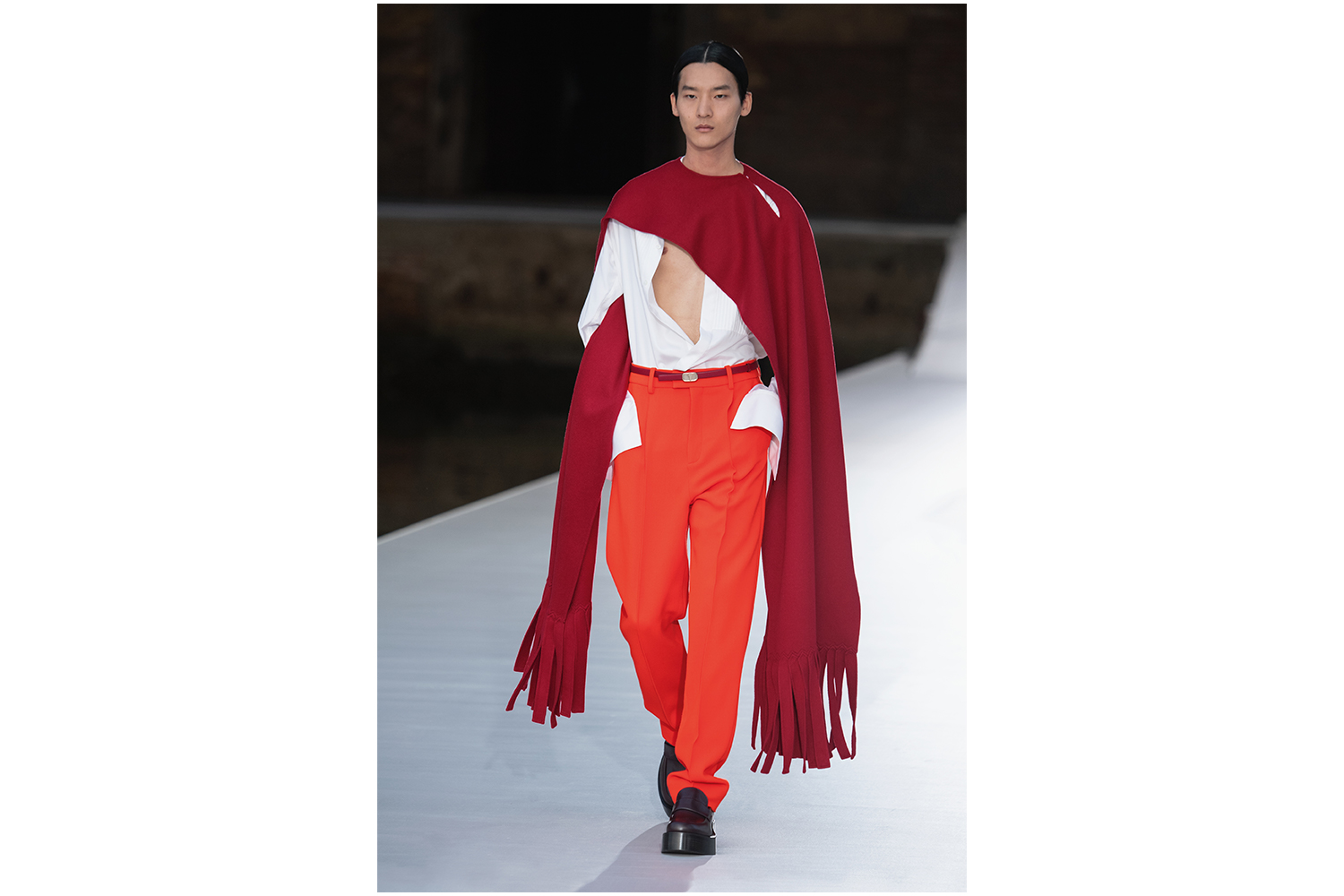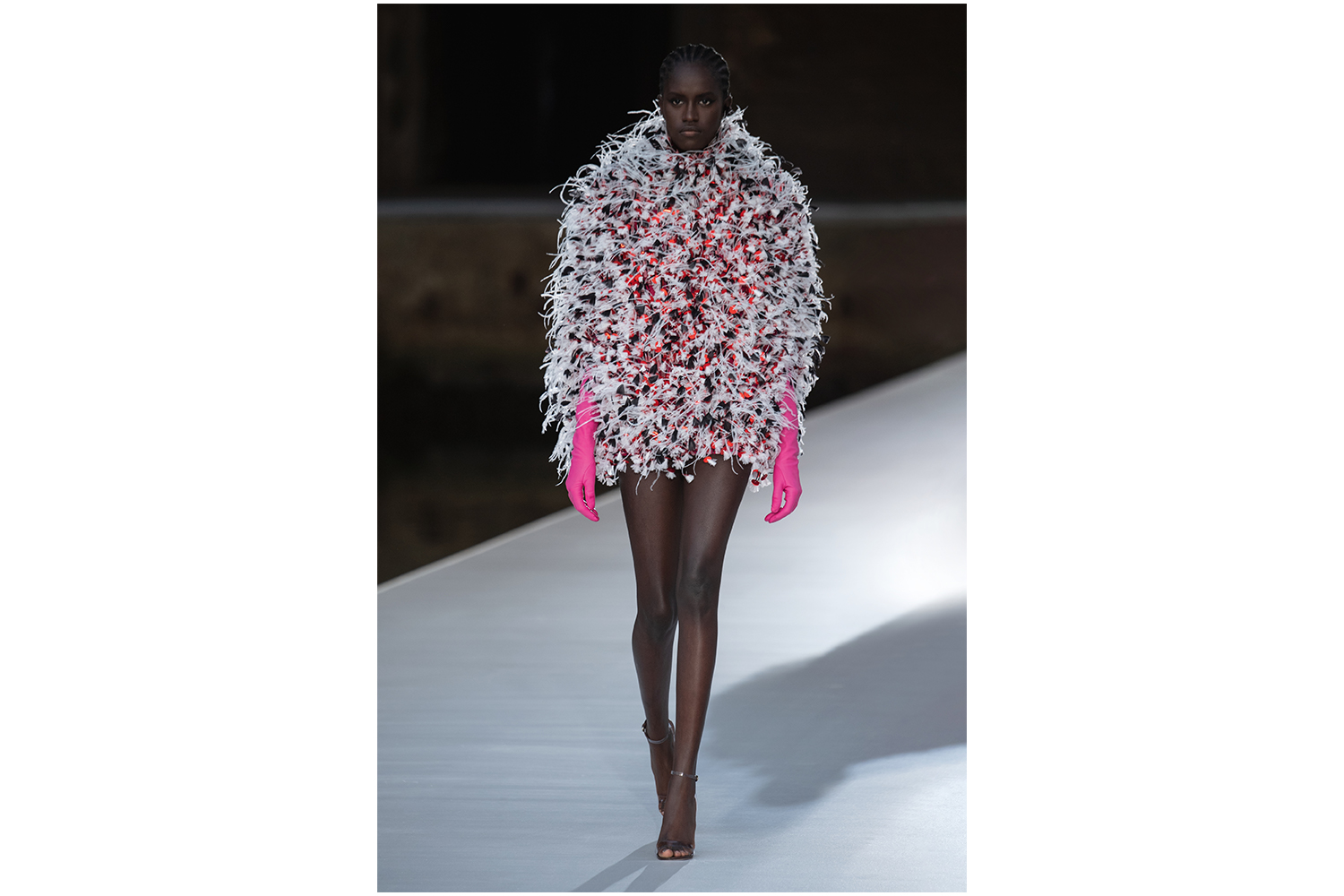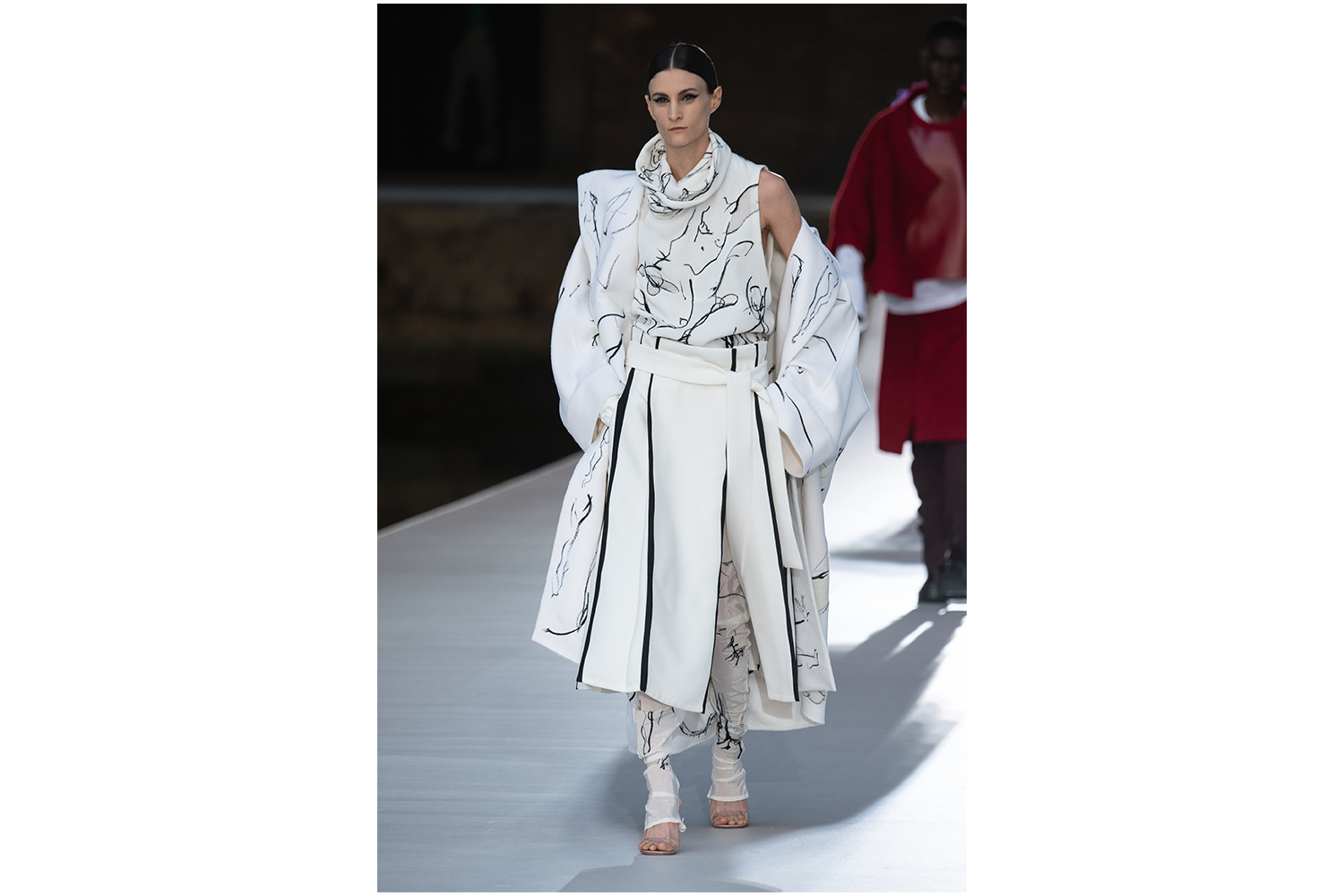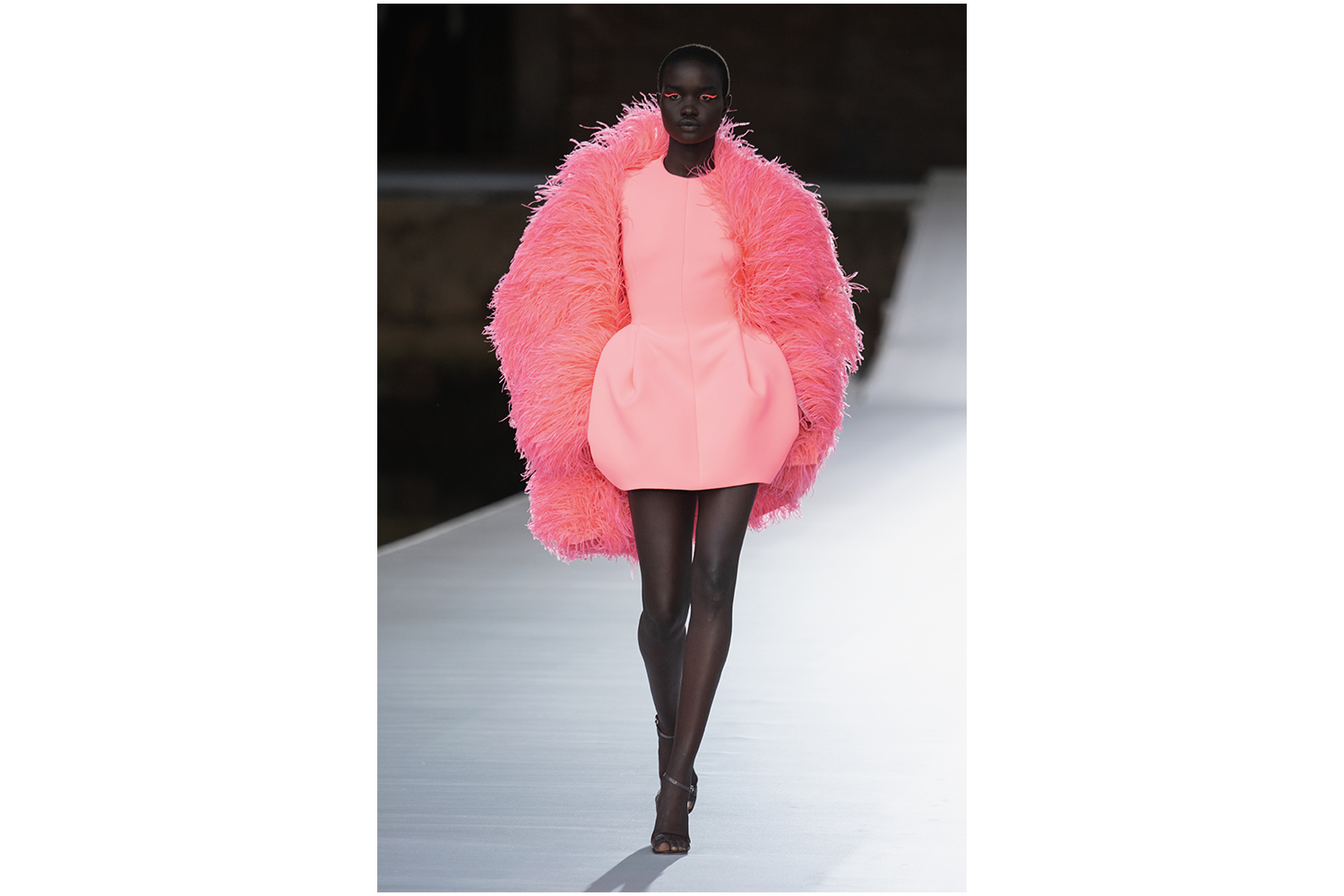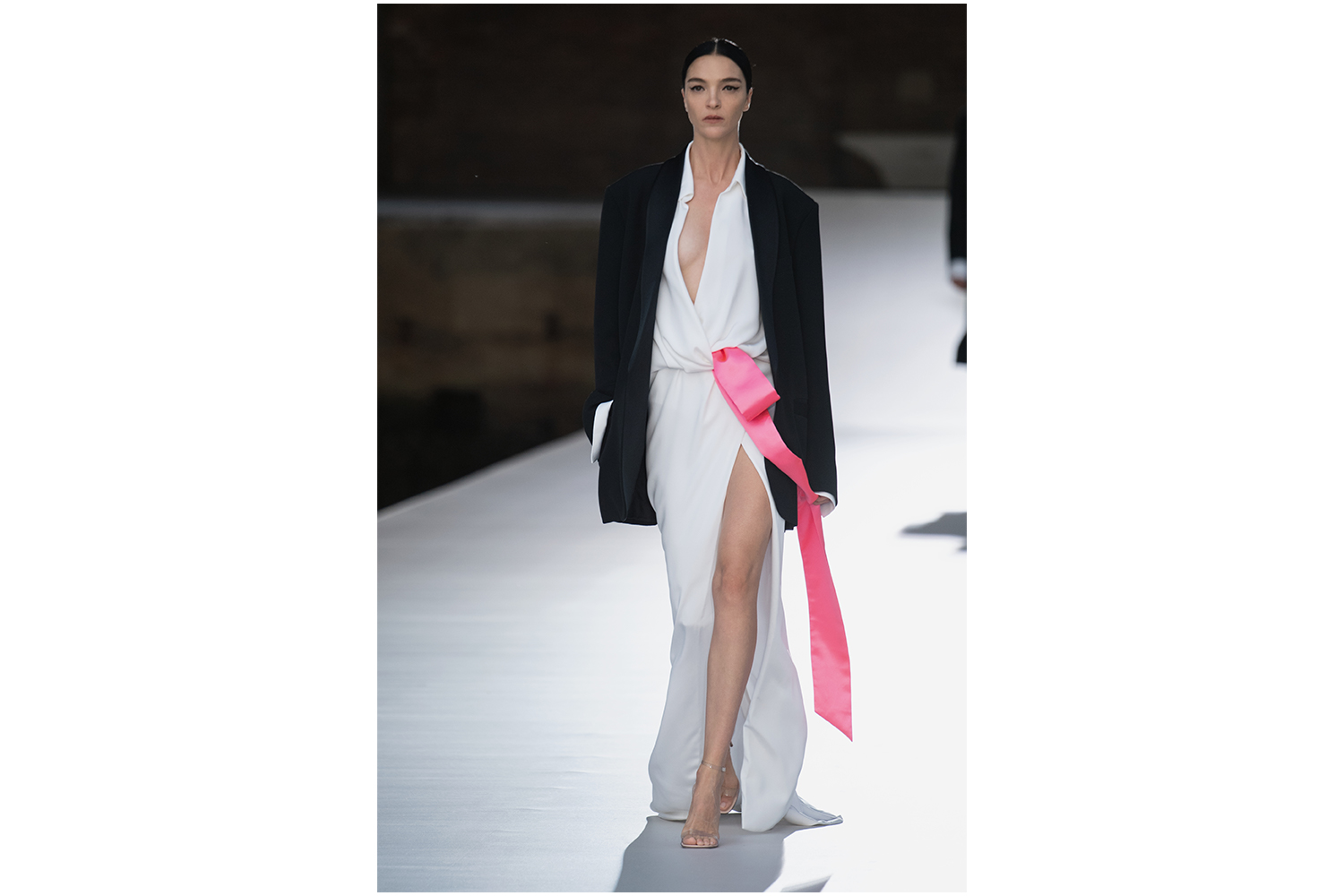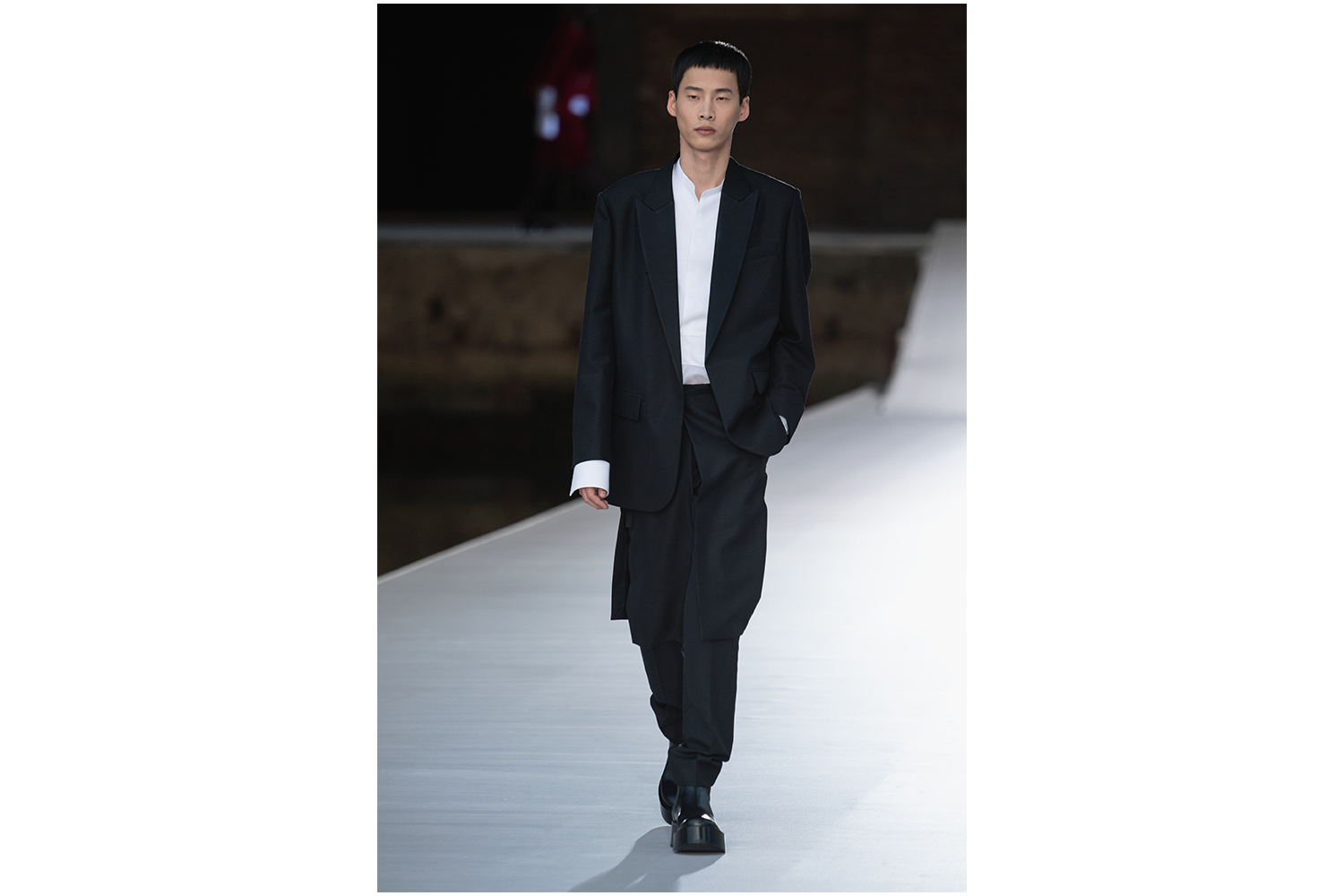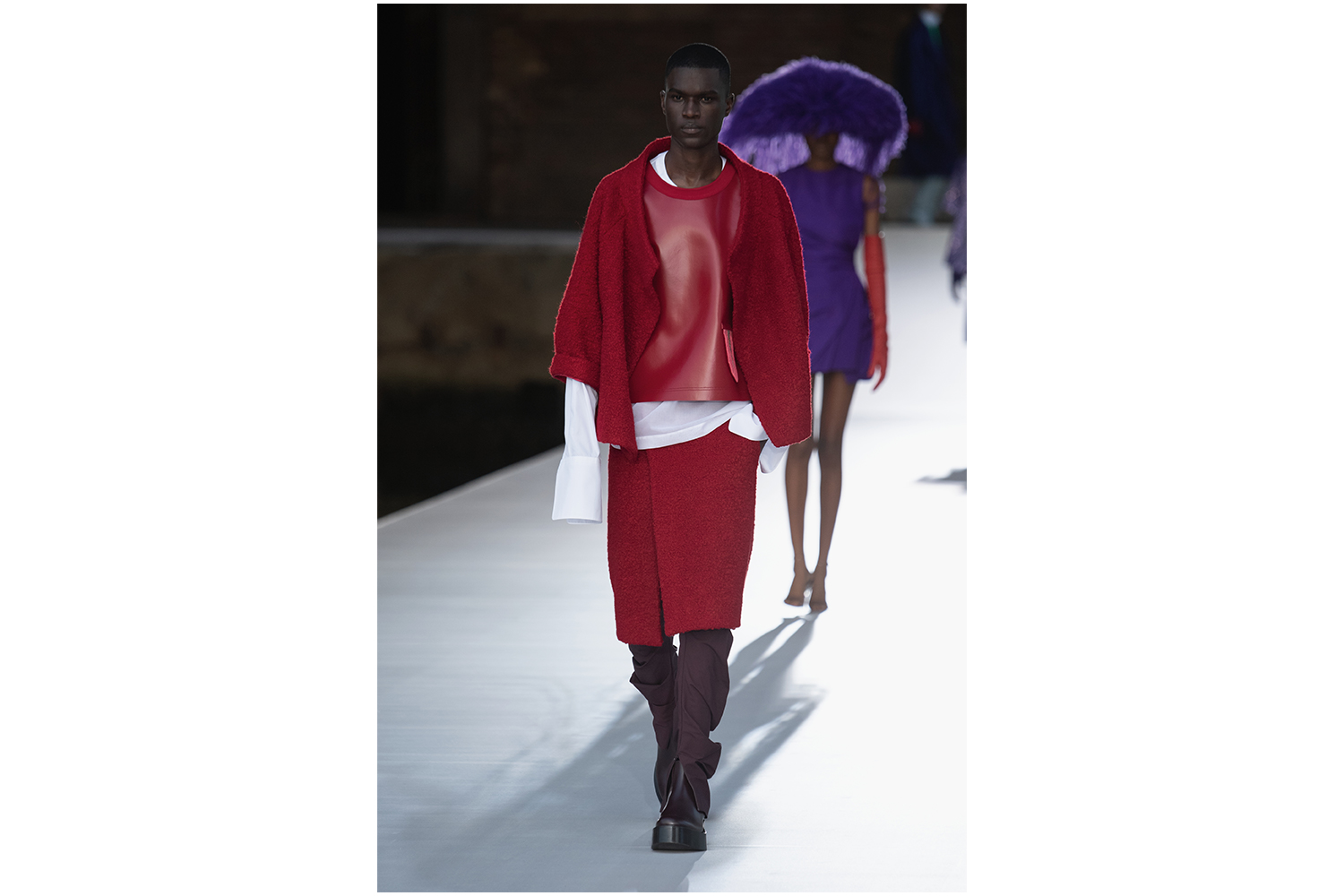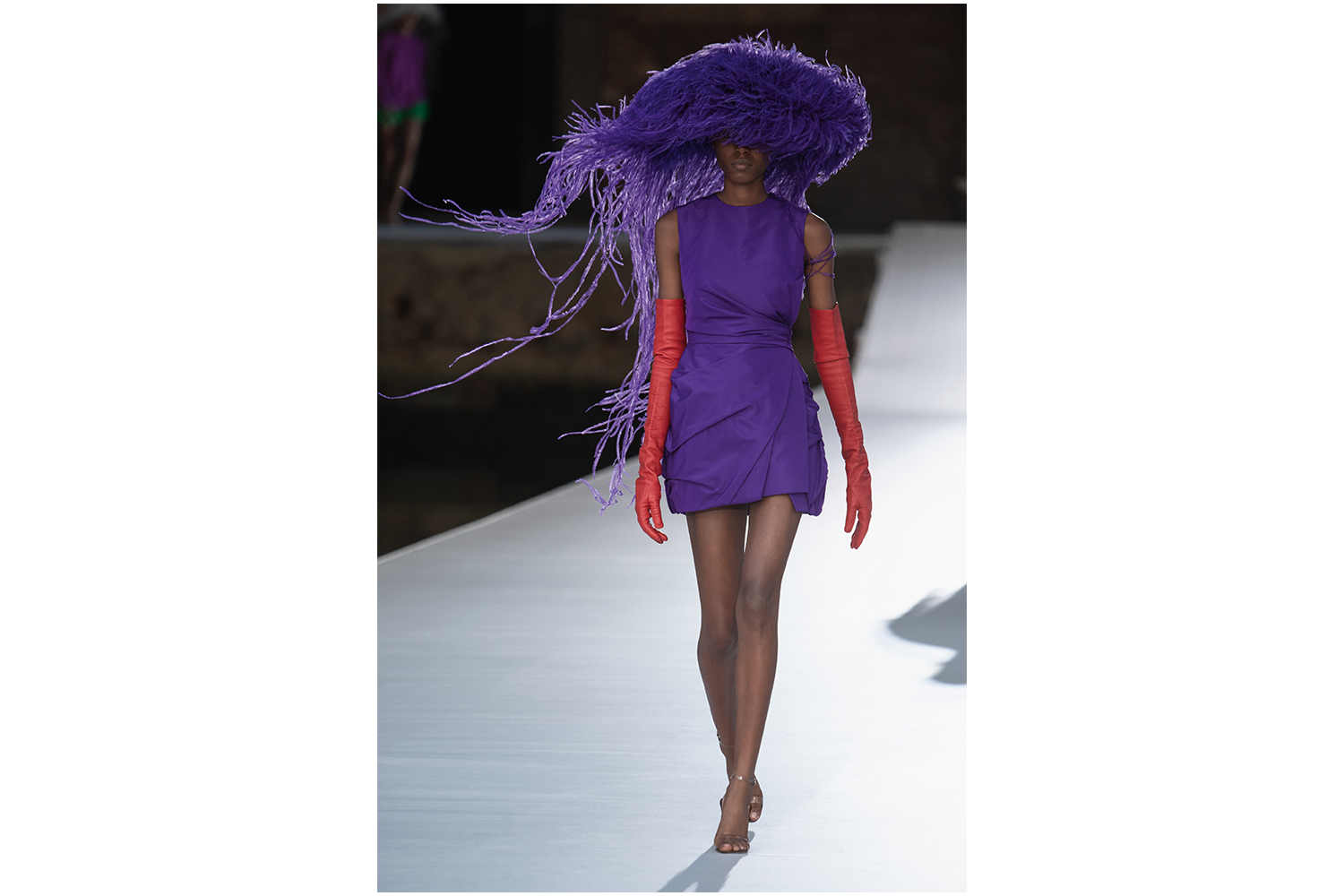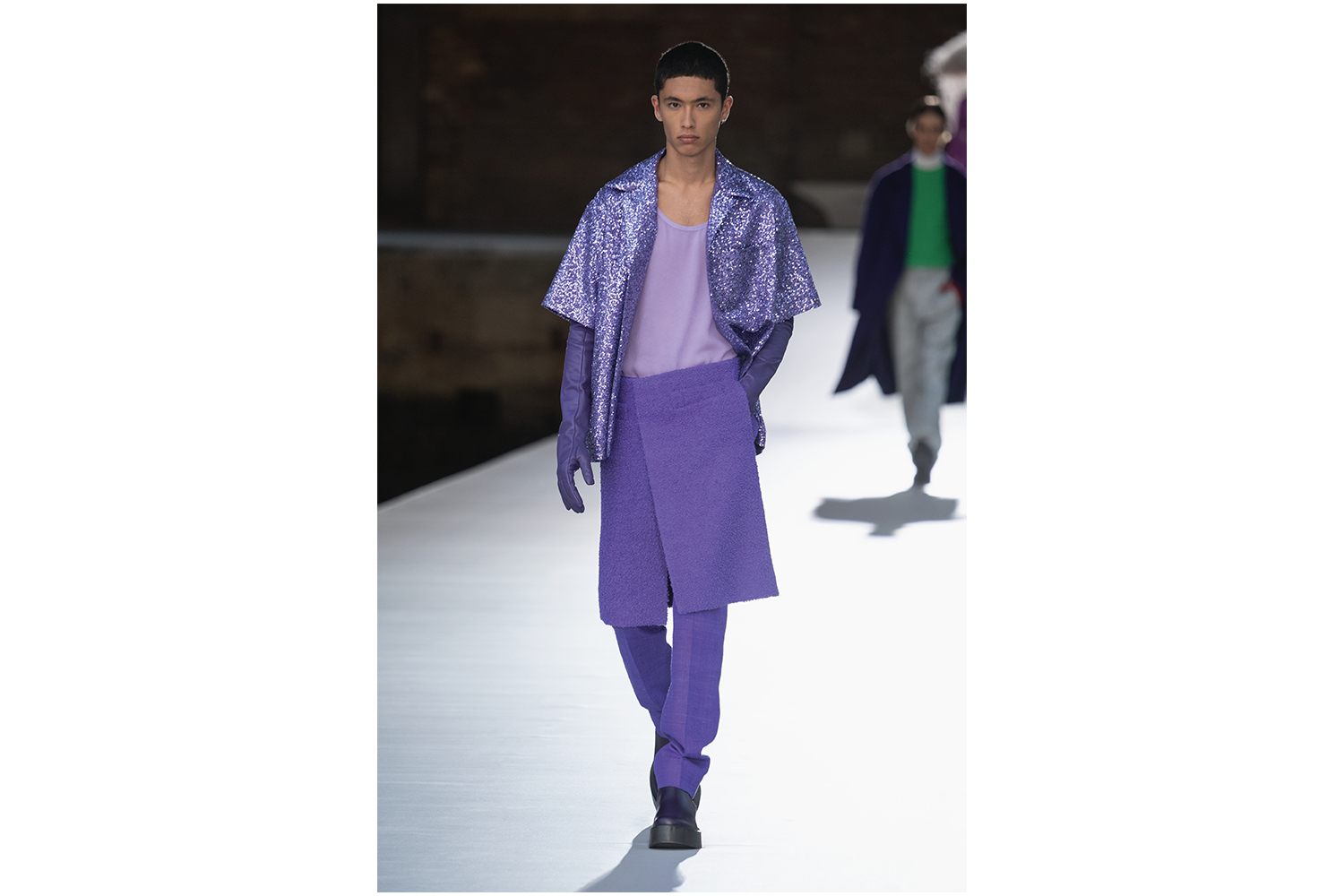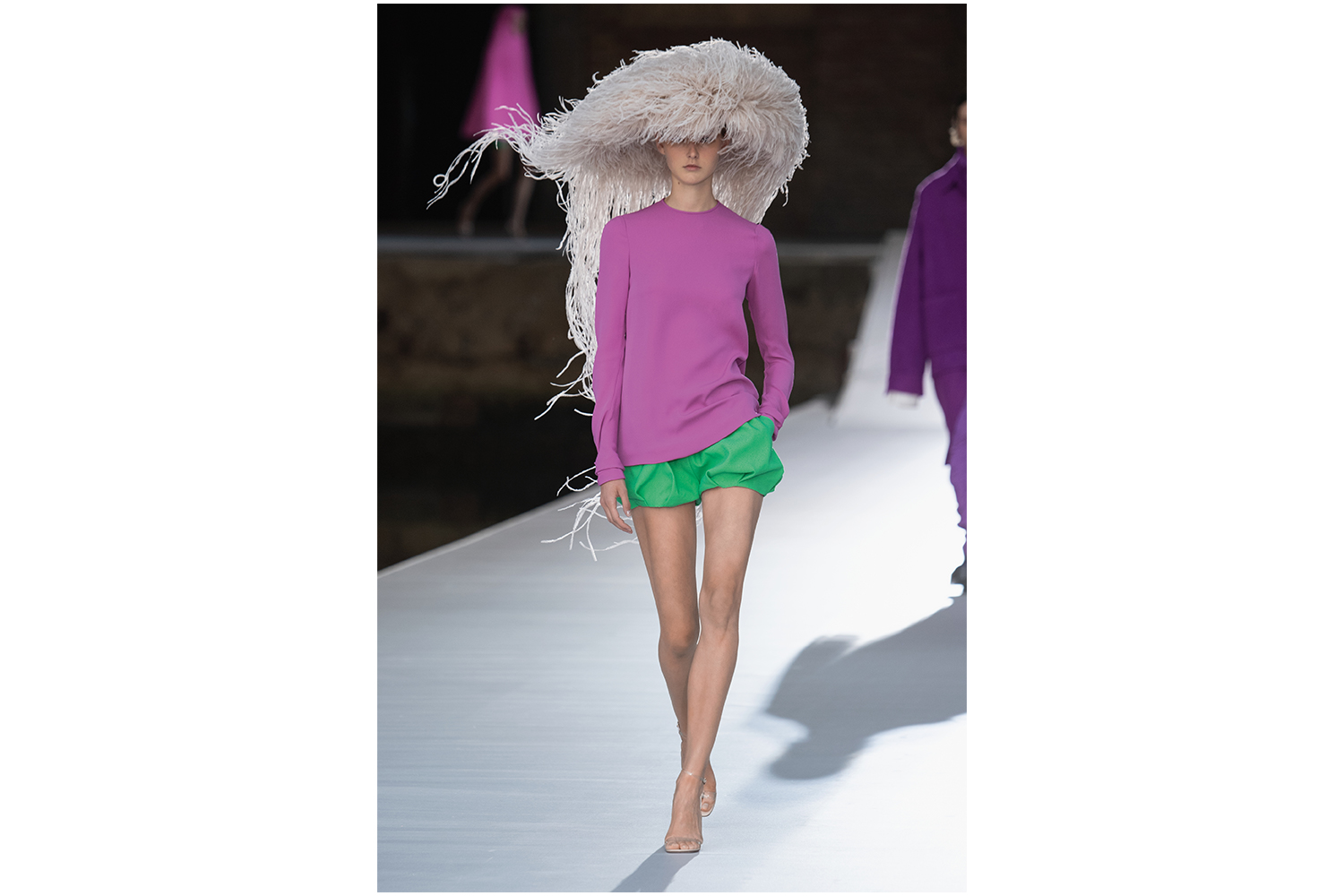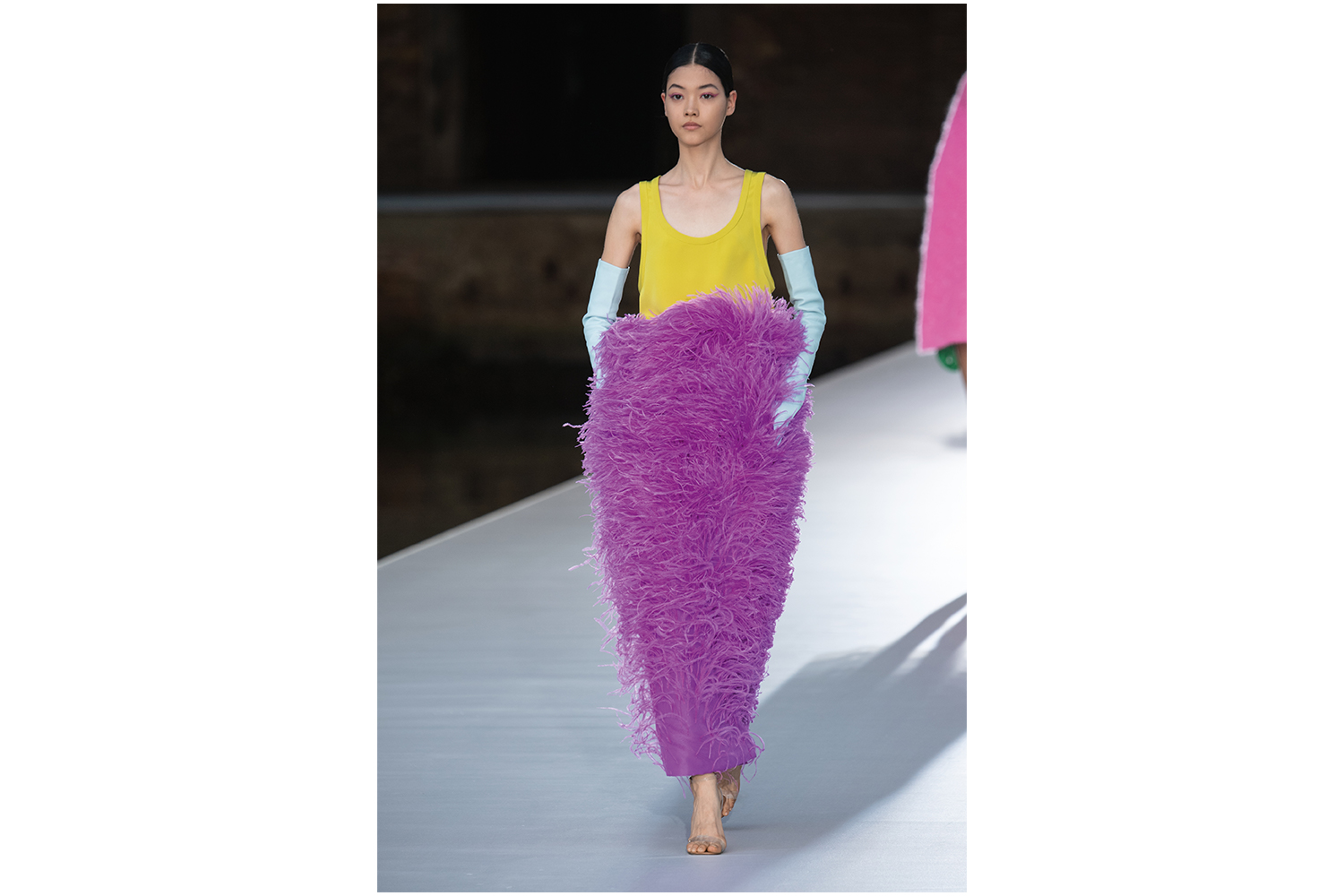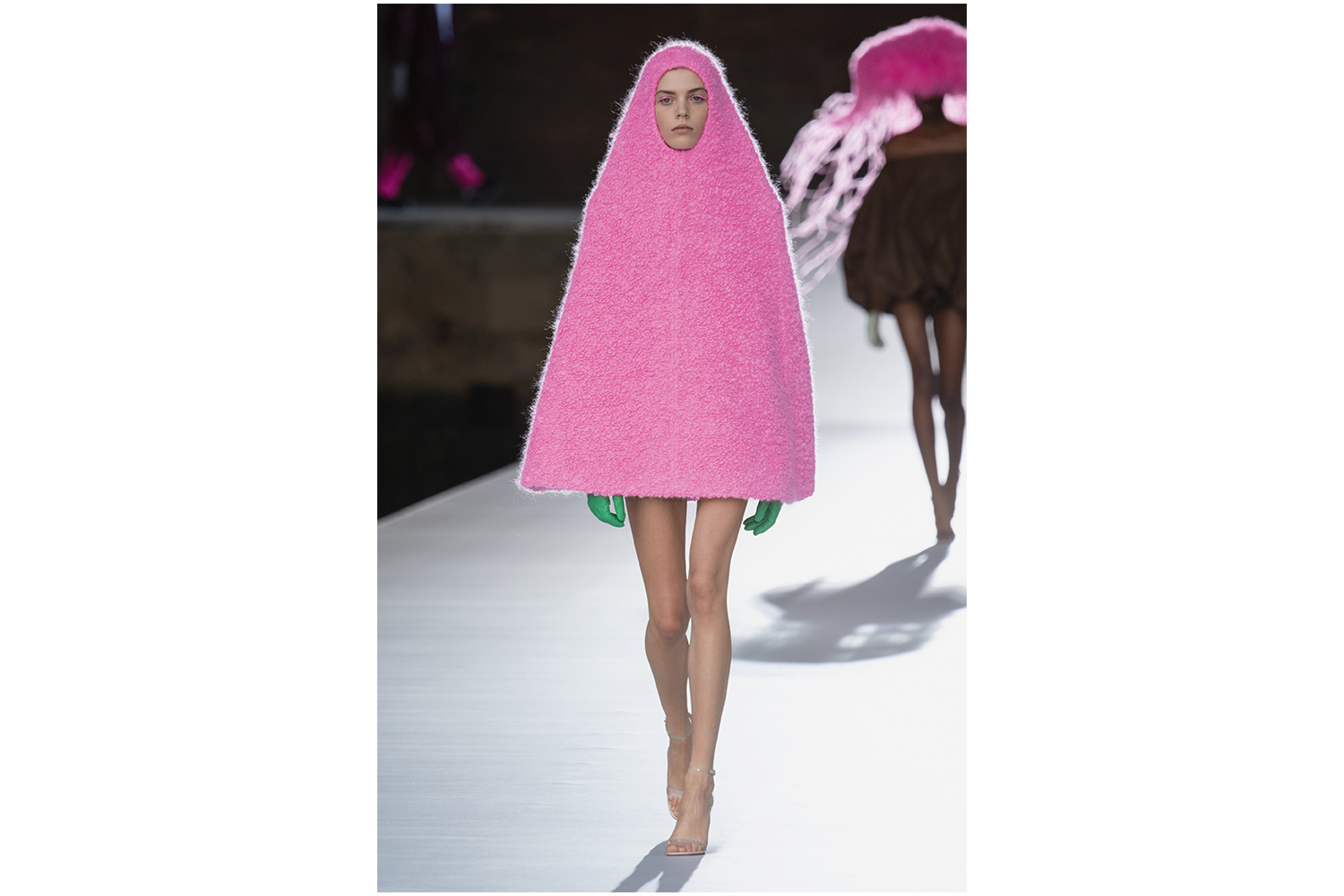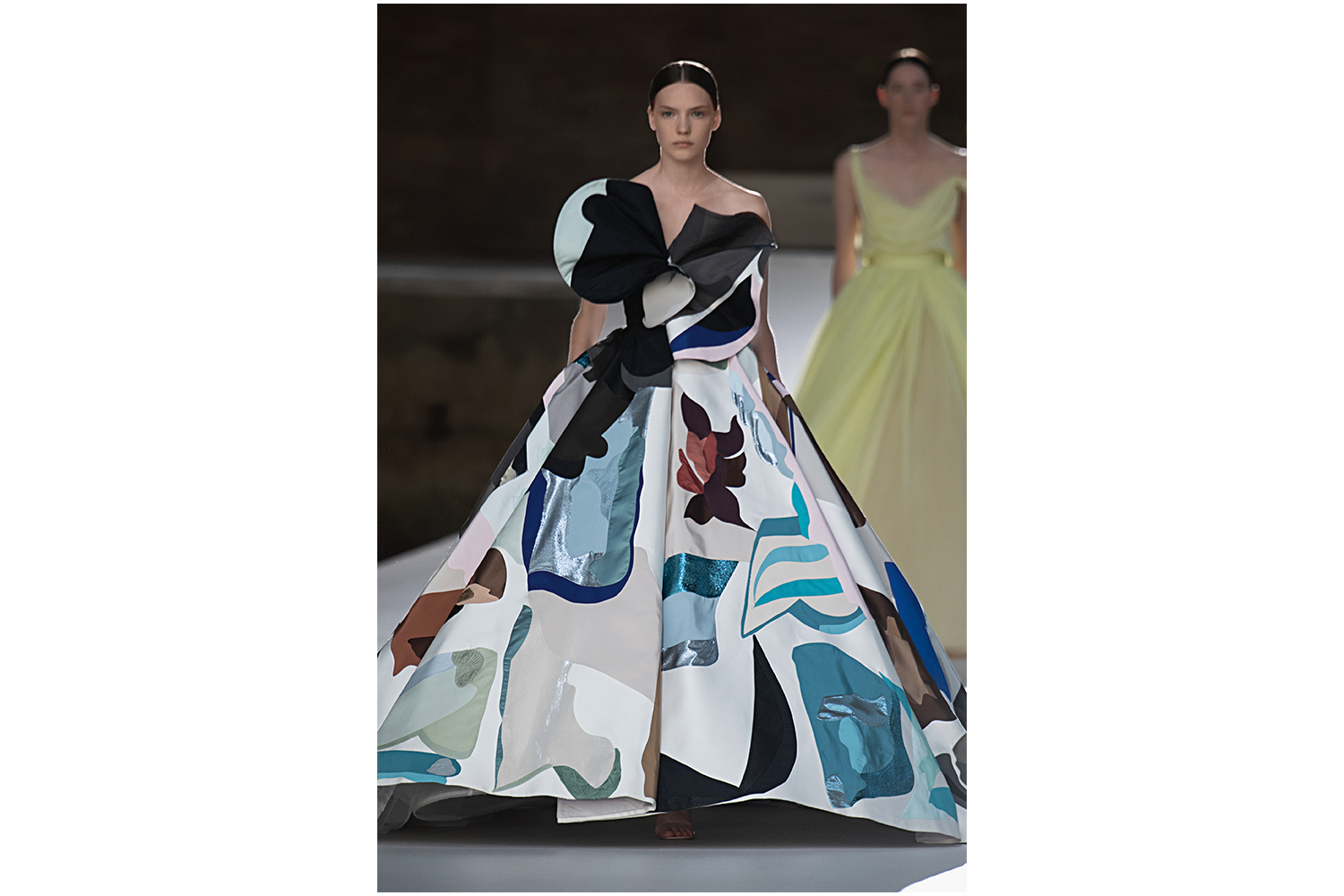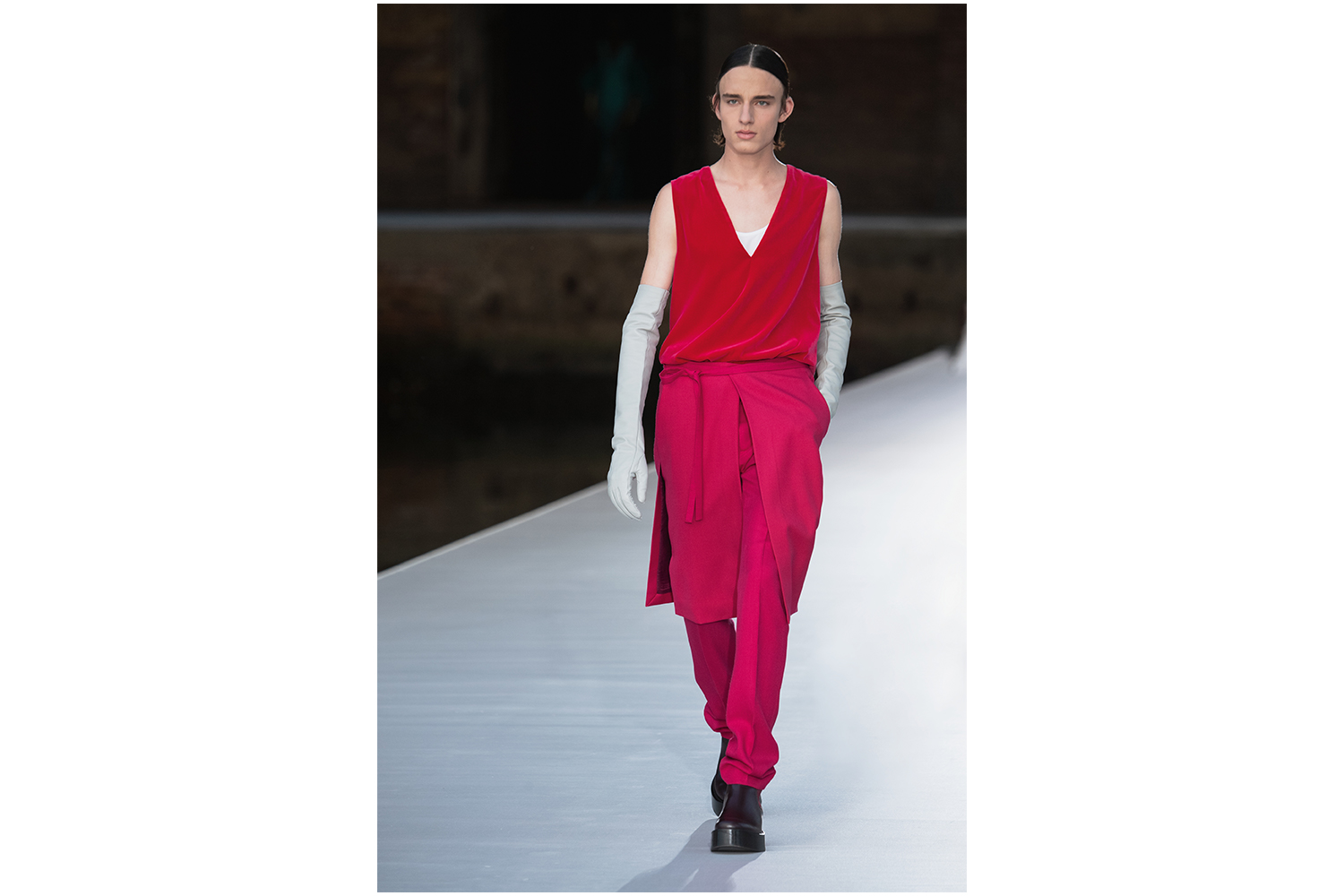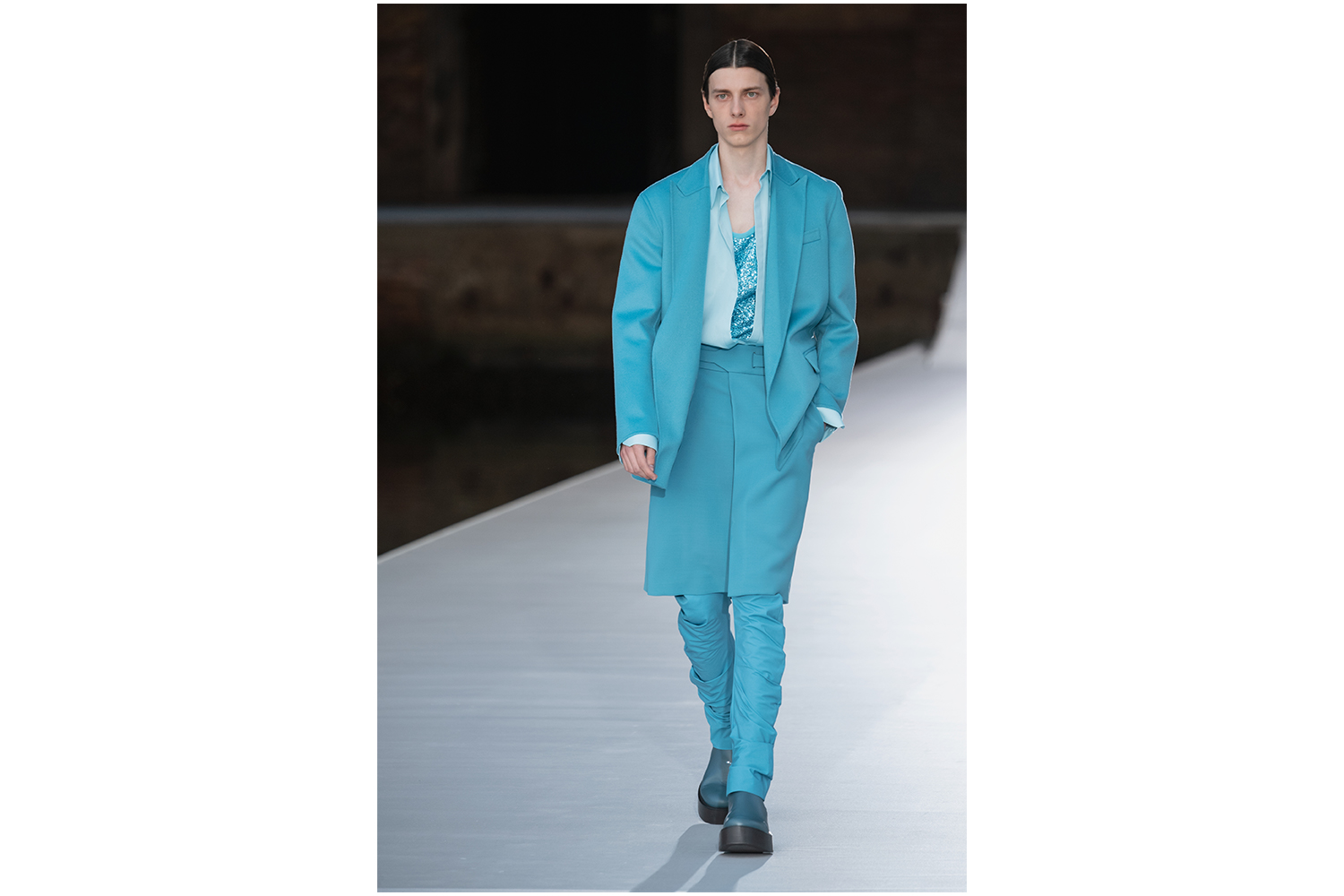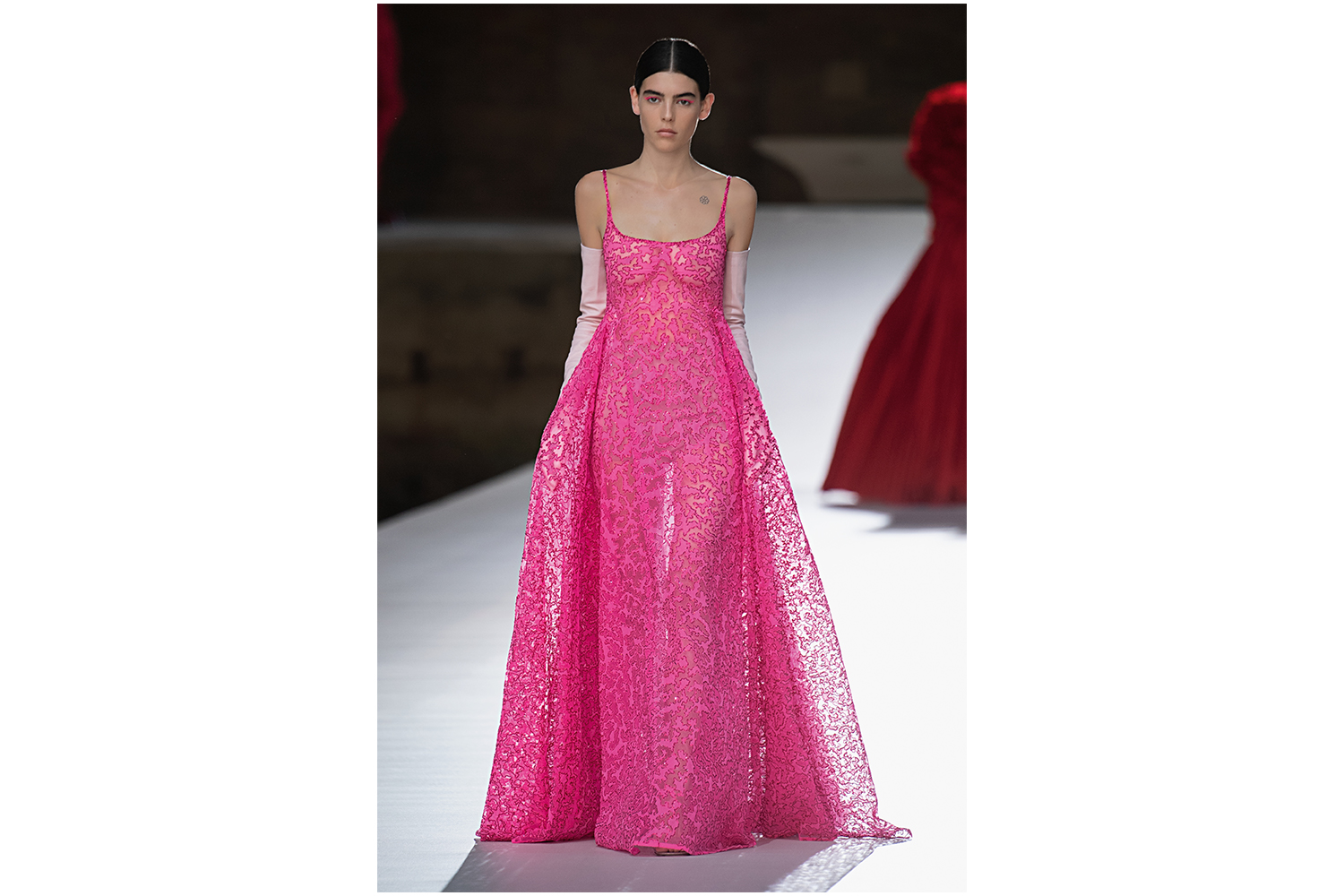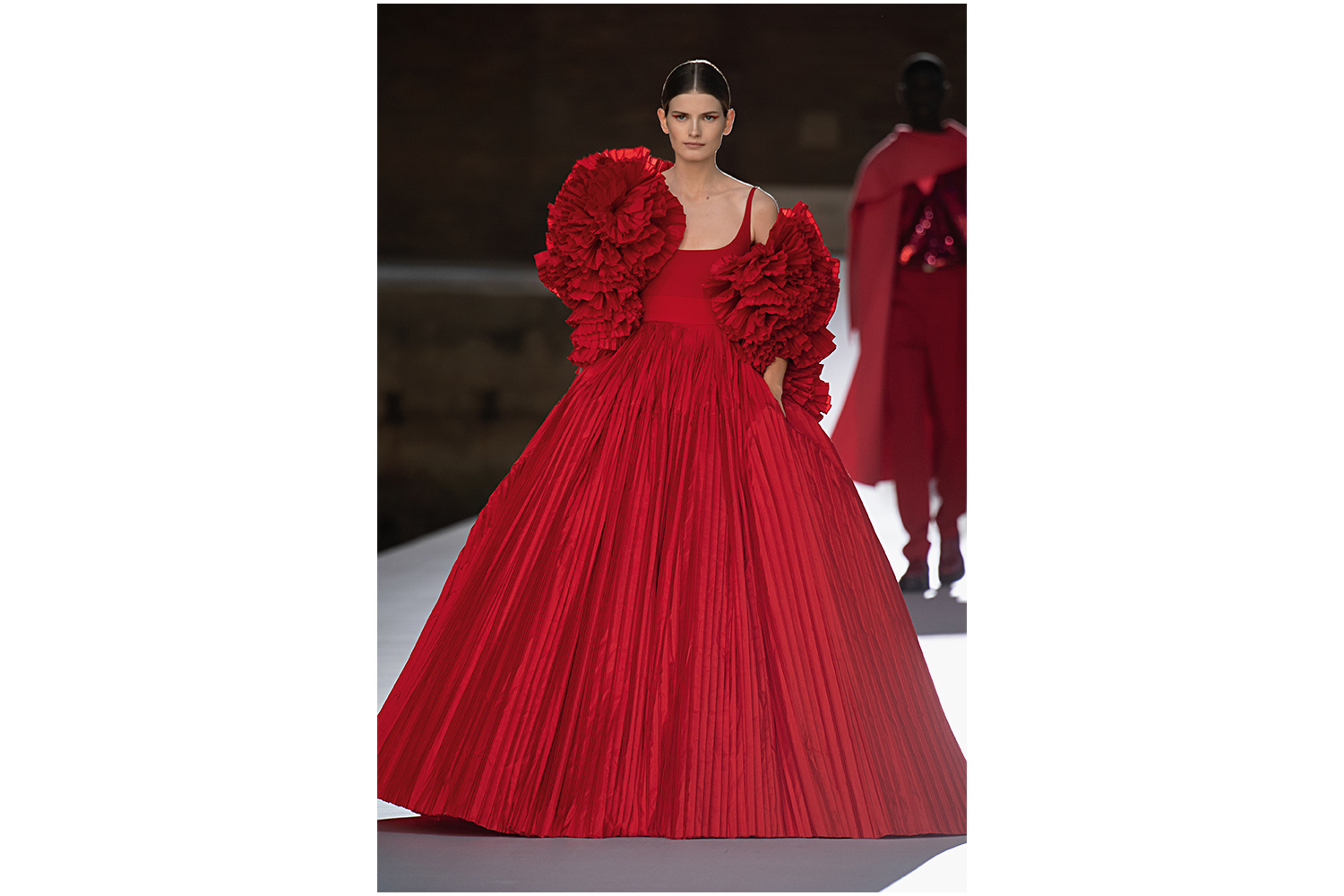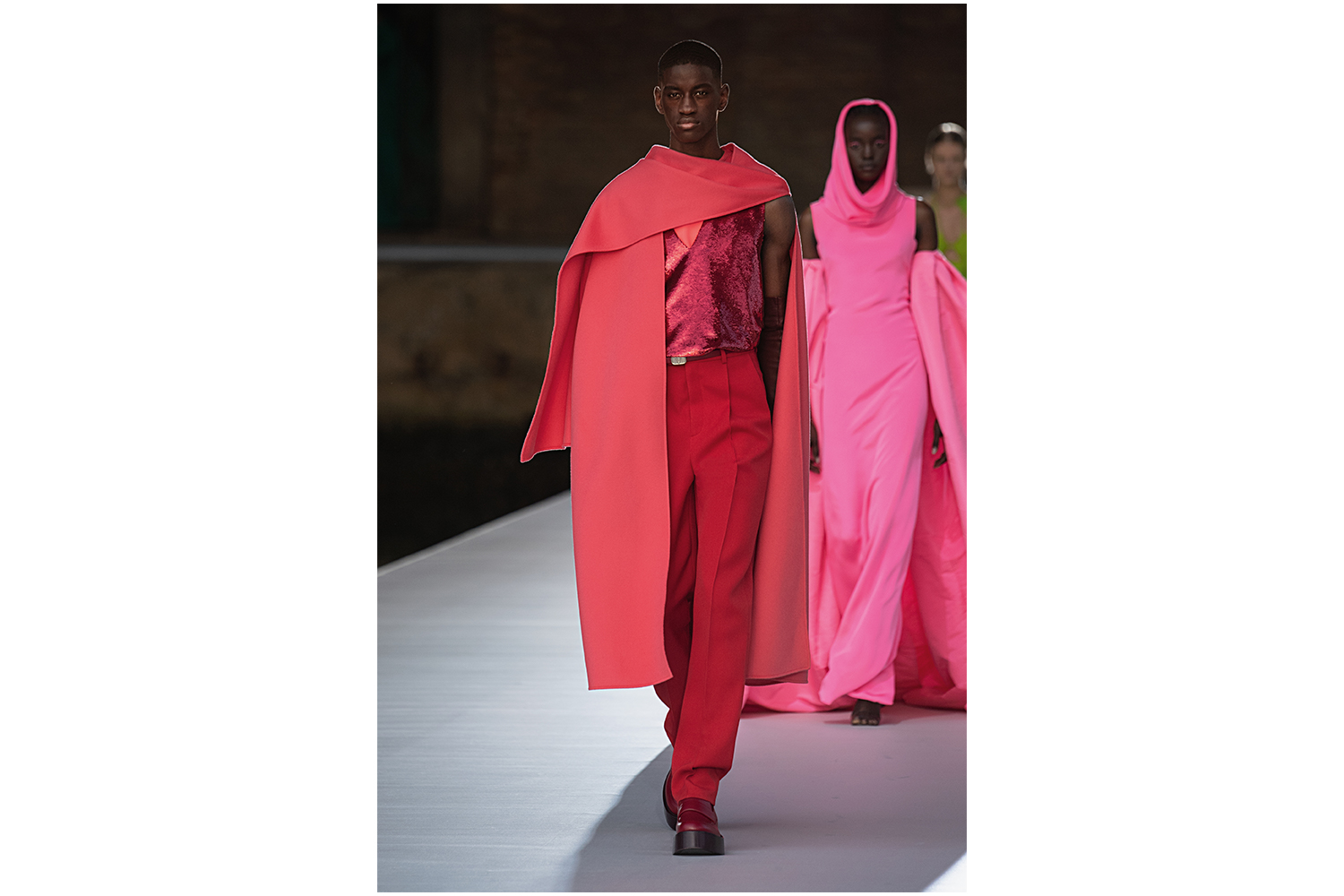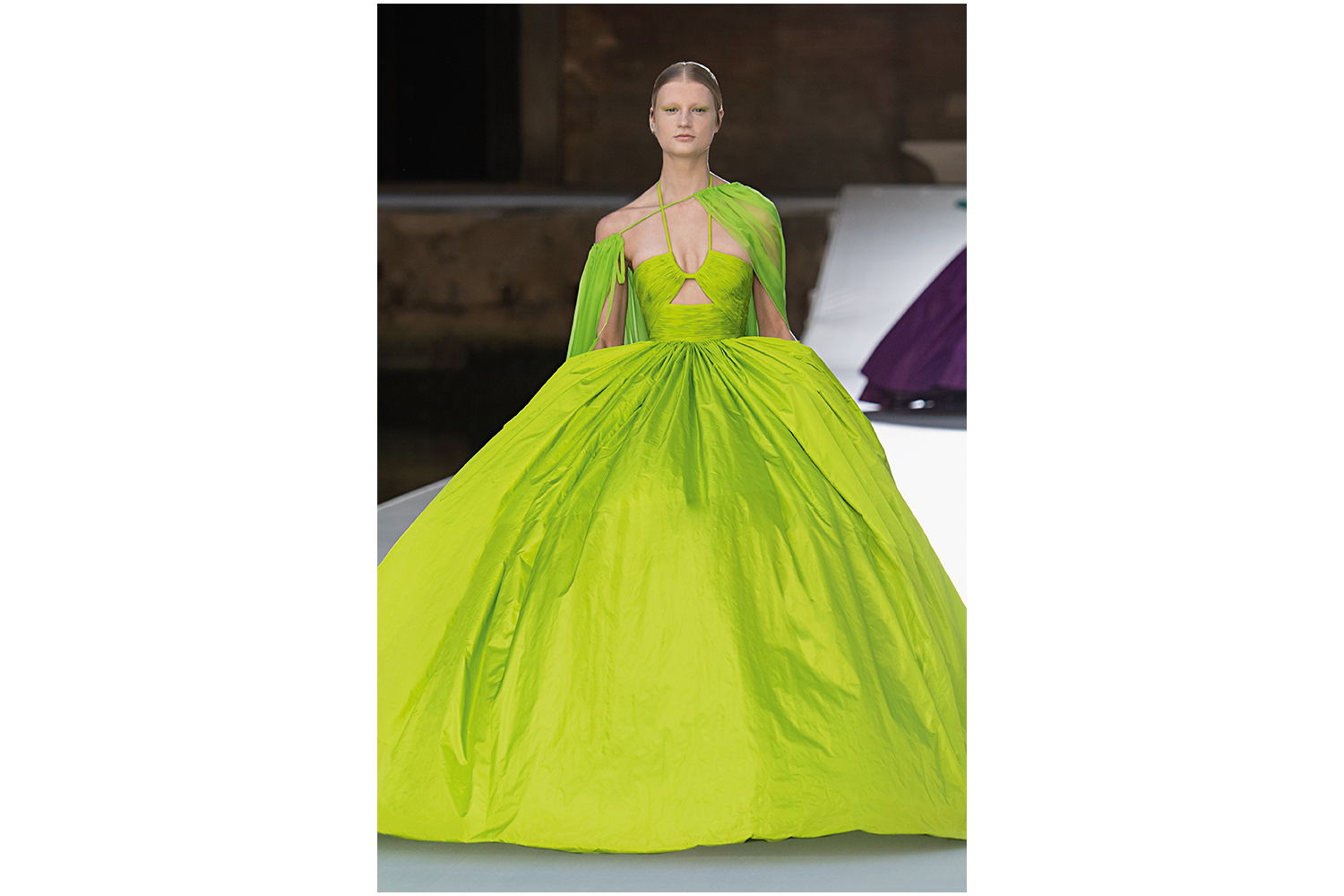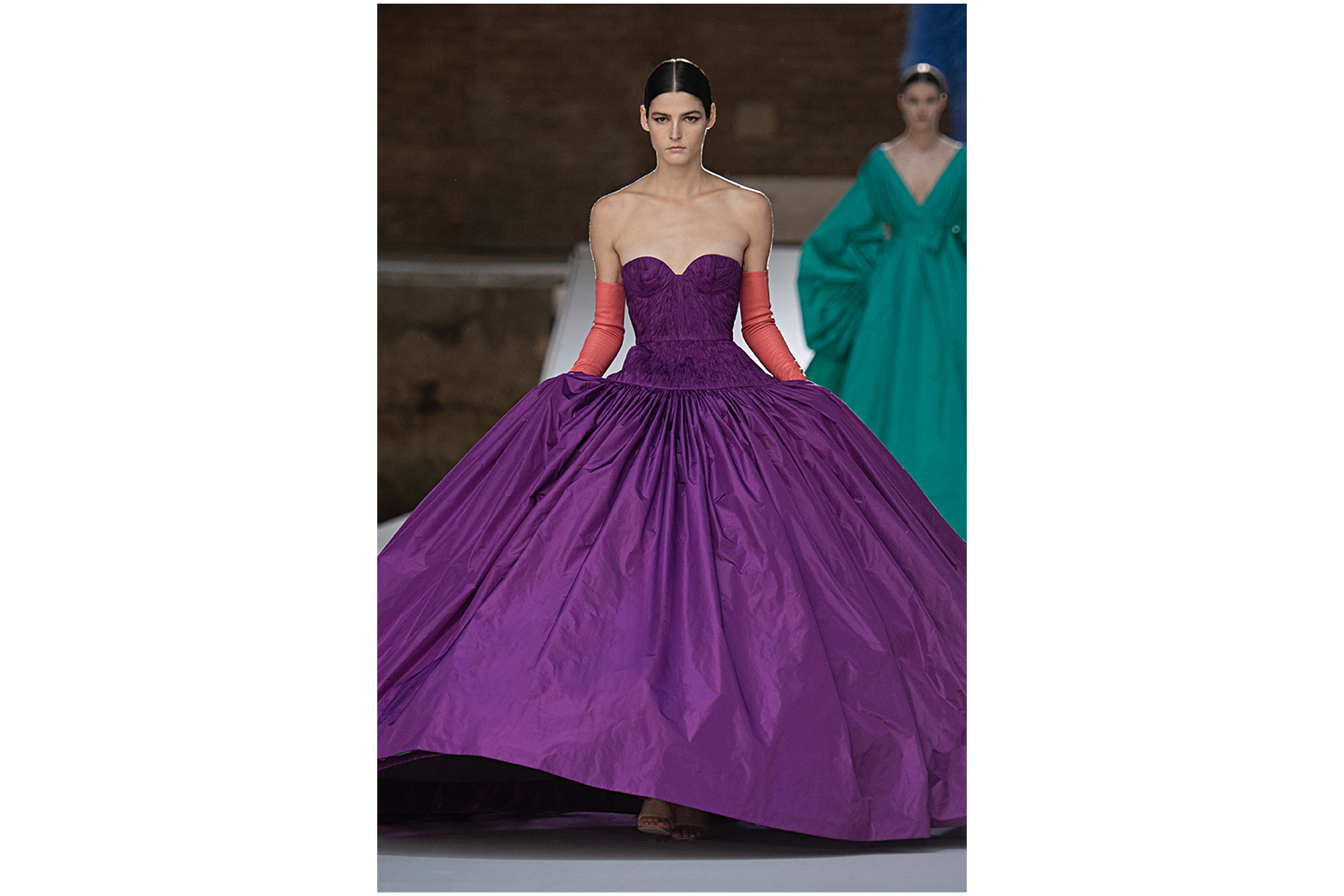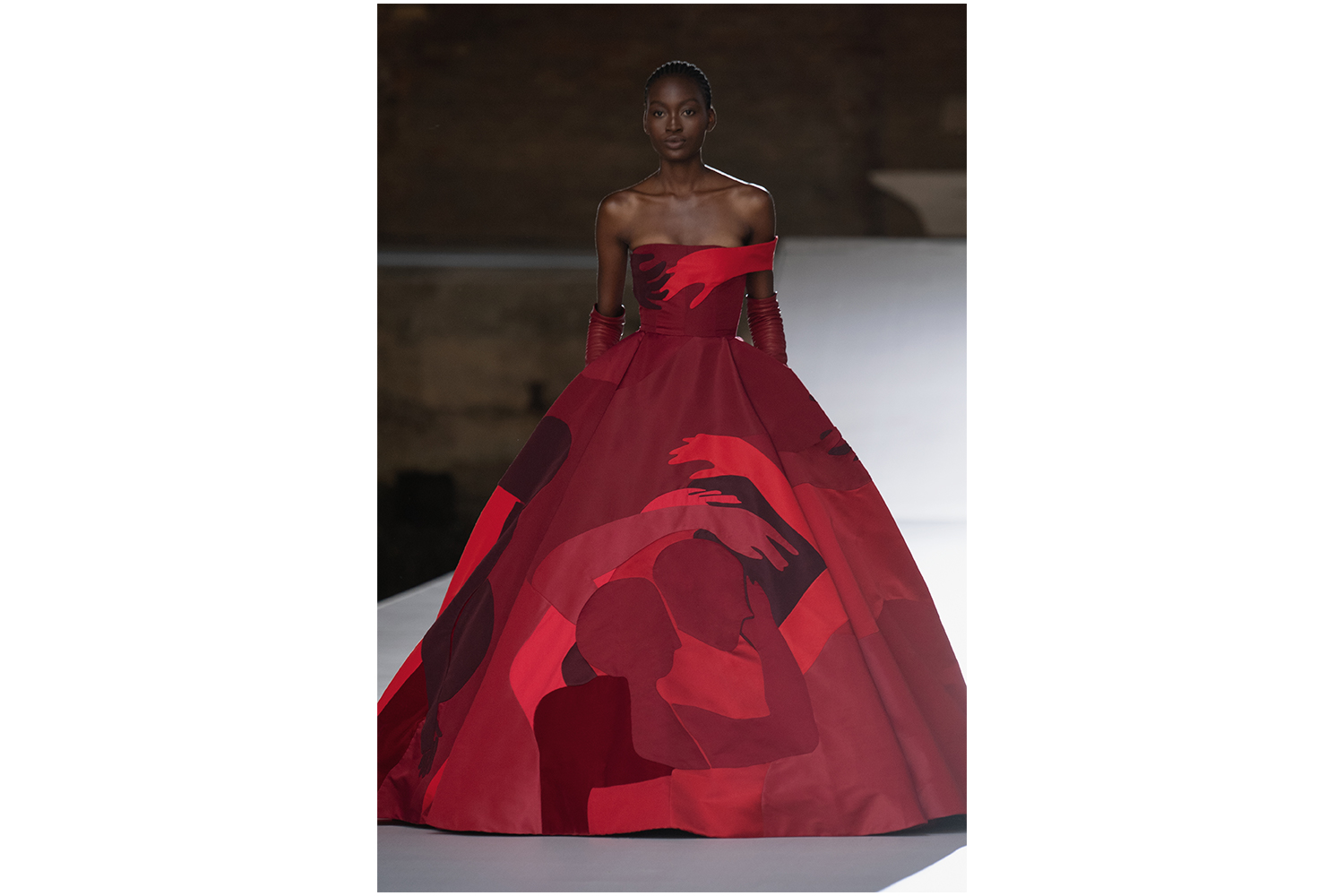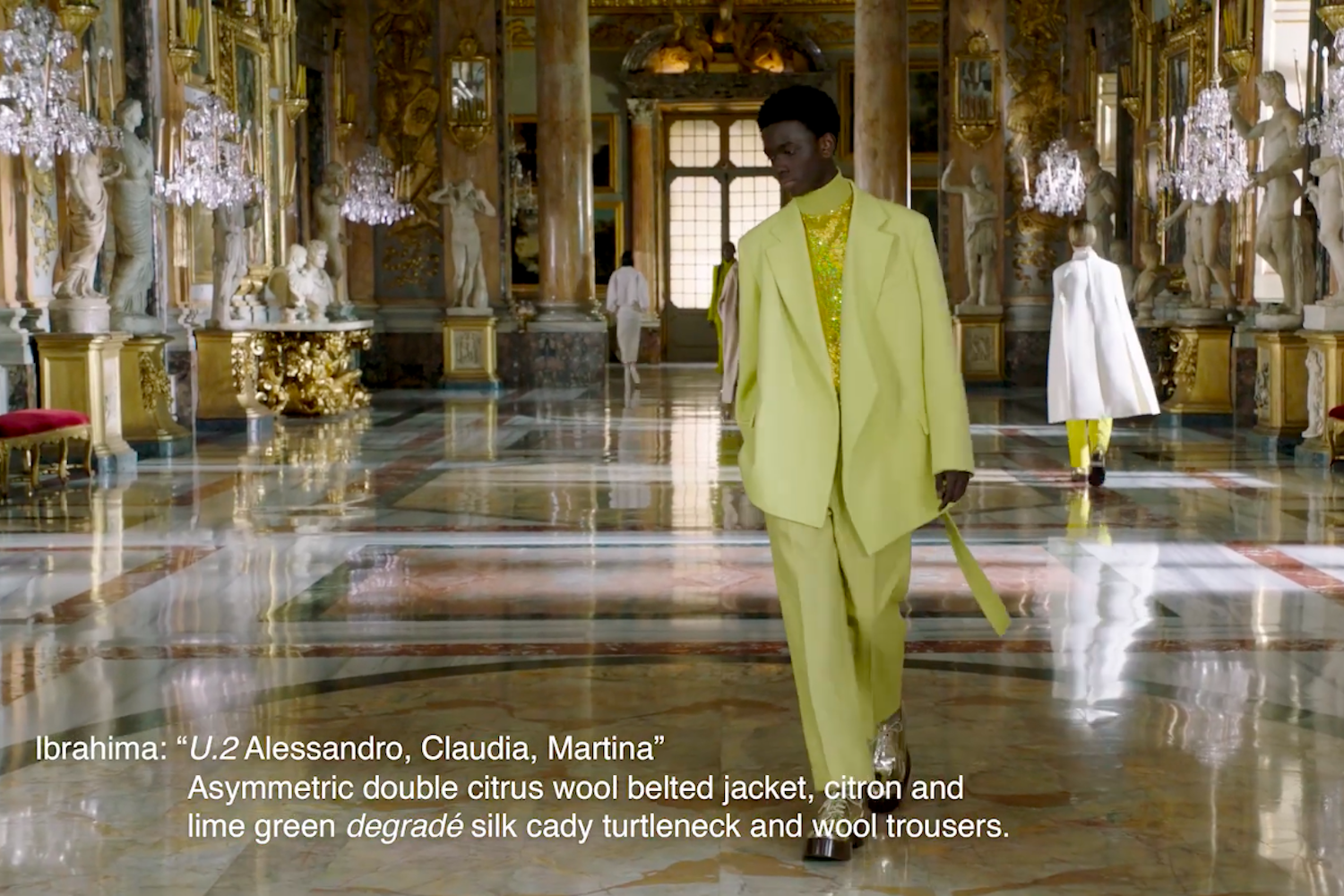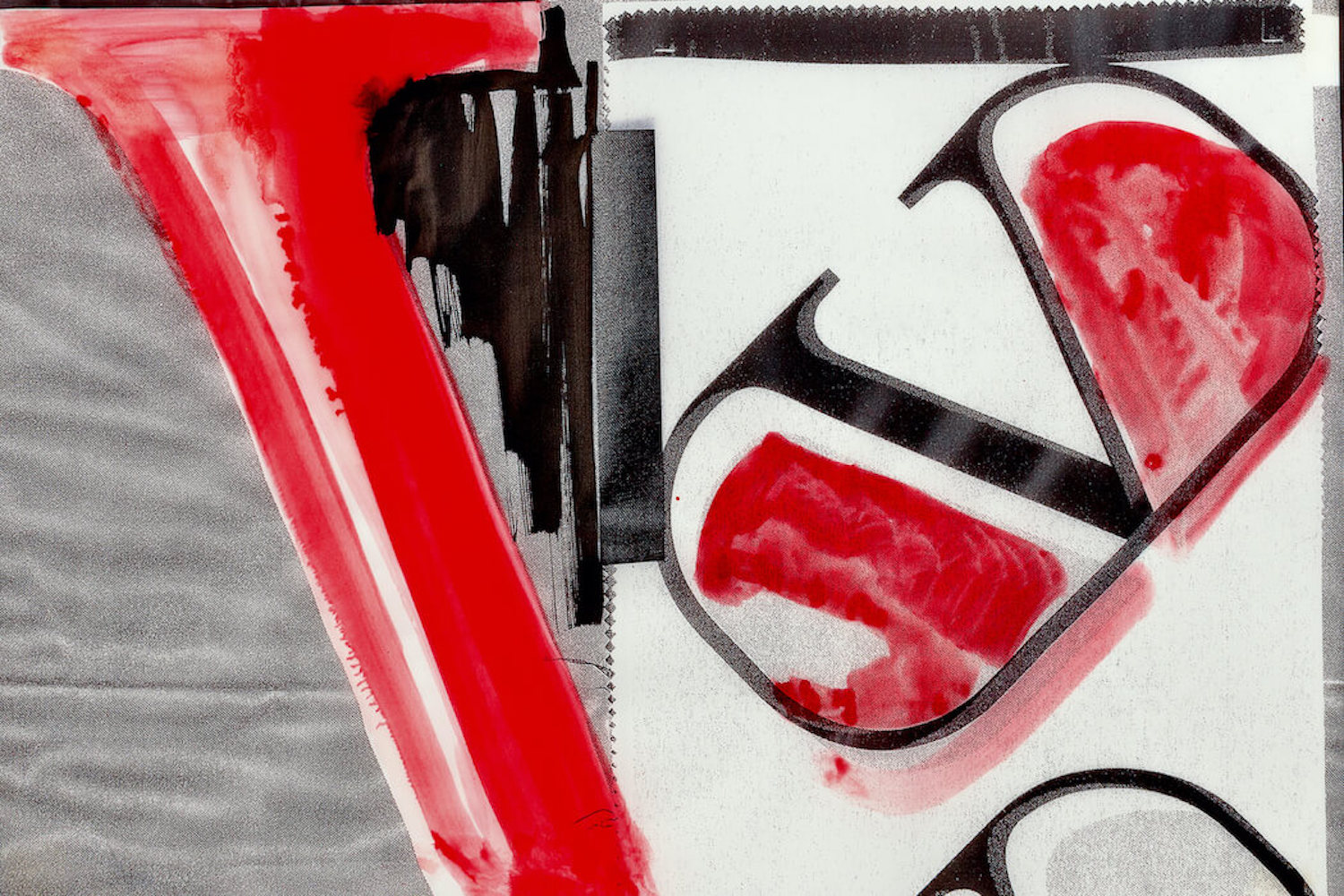Through society, fashion communicates what it thinks of the world. This is one of the many ideas Roland Barthes puts forth in The Language of Fashion. Talking about brands or trends, folds or volumes, is not for superficial people; perhaps we should always remember that.
I have been wanting to write about an experience like this for some time. The delay in doing so is due to a curious feeling of permanence, a feeling that has often led me to be moved while writing a meta review.
I am not a journalist, which is strange confession coming from an editor and publisher. I don’t recognize myself in that title. Nor am I an expert on the coding of fashion. So when I’m lucky enough to experience emotions like those inspired by the Valentino Haute Couture F/W 2021–22 Des Ateliers show, I become even more ruminative, spending days in isolation reflecting on the message and on what I saw. Images are injected into my experience.
Fashion is not art, but art is a language, just like fashion, says Pierpaolo Piccioli, with a lucidity that reminds me of Barthes. Thus he chose to cultivate, with the help of curator Gianluigi Ricuperati, an open and spontaneous dialogue with seventeen artists, mostly painters. From memory: Joel S. Allen, Anastasia Bay, Benni Bosetto, Katrin Bremermann, Guglielmo Castelli, Maurizio Cilli, Danilo Correale, Luca Coser, Jamie Nares, Francis Offman, Andrea Respino, Wu Rui, Sofia Silva, Alessandro Teoldi, Patricia Treib, Malte Zenses, and Kerstin Bratsch.
The dialogue did not deviate the vision of the artist (here Piccioli is extraordinary) nor from the haute couture creation (and here he is a contemporary genius). Rather, they managed to enter the inner workings of both worlds, which extend beyond surfaces (canvas, paper, fabric), beyond the body, becoming a fluid message of inclusivity, opening a deeper relationship between the two respective ateliers. We are invited to investigate the story told by each artist and experience the narration of beauty through the codes of fashion. And this is the dynamic embodied by the eighty-two pieces that were born through this collaborative narrative, in addition to Piccioli’s other free-form garments. Eighty-two sculptures (an ugly term, but ok), all radiant with emotion, moving on a catwalk suspended in millennial Venice.
The paintings overflow from the chiffon, from the volumes, and through the fabrics they take on a new path and meaning. They insinuate themselves into the body of the model and into the eyes of the spectators.
Which brings me to us, the audience: all dressed in white, ethereal (or attempting to be, despite transgressive experiments with velvet and transparent materials), sitting on resin cubes spaced at a COVID distance. Two mirrored rectangles formed the catwalk at Le Gaggiandre in the Venice Arsenale. On an adjascent floating structure British singer Cosima emerges to deafening silence. With a killer vocal range and style evoking Sade and Tracy Chapman, she sings covers like “Nothing Compares 2 U.”
Models and more models (the subjects that spur Piccioli’s emotions) glide with colors, and then more colors, colors that are volumes and volumes that are the shivers I feel now while writing this. Some are explicit pieces of art, others less so, but all are Pierpaolo Piccioli. Each work carries a message of strength and fragility, freedom and independence.
I start to become emotional — the combination of live performance and visual splendor is a little too much. The pregnancy cry: there are two of us watching and feeling, and one of the two, me, is also the less strong.
For the grand finale, Cosima closes with “What the World Needs Now Is Love,” which again finds me emotionally unprepared. Des Ateliers becomes a psychotherapy session in which I begin to ask myself questions about the values of today’s society: integrity, stability, and, always at the center, the theme of love. Love. Yes, the love I feel inside, and the one I see outside. For eighteen months we’ve been living in suspended animation, one day at a time, in a state of inevitable uncertainty. Many can’t afford to live this way, but all of us, I hope, continue to bet on love. Maybe it’s because I was already in my fourth month of pregnancy, maybe it’s because Cosima’s voice singing these eternal pieces made me enter a dimension of empathetic acceptance. Suddenly I was no longer at a fashion show but amid a group of people with common ideals and thoughts. Like at the dinner in honor of Zendaya and the cast of Dune in early September, the windows of Harry’s Bar looking out onto the lagoon, organized by Valentino. At the table with his closest friends there was a sense of homecoming, of what a true Maison is in the literal sense. So I was reassured by my July emotions. Valentino makes clothes out of emotions, which communicate what he thinks about the world.
It is a defined, polished position, articulated with clothes instead of words. And this is how Piccioli, from the town of Neptune on the outskirts of Rome, landed on Time magazine’s list of the one hundred most influential people in 2019. Not because the clothes are beautiful or ugly but because of what they bring inside and outside. What they tell us about society. After all, he’s a man from another planet! Because his clothes are words. Words are the clothes of our mind. Words are stones, someone said, because they are powerful messages. In every age. And so this is it: a thank you. This is a letter of thanks — definitely not a review, and certainly not a fashion article, although it suggests an idea of fashion and what it should be. And maybe how fashion could be told. But here we go back to getting overexcited. Until next time, dear Roland Barthes. I’ll let you know what’s going on down here.

